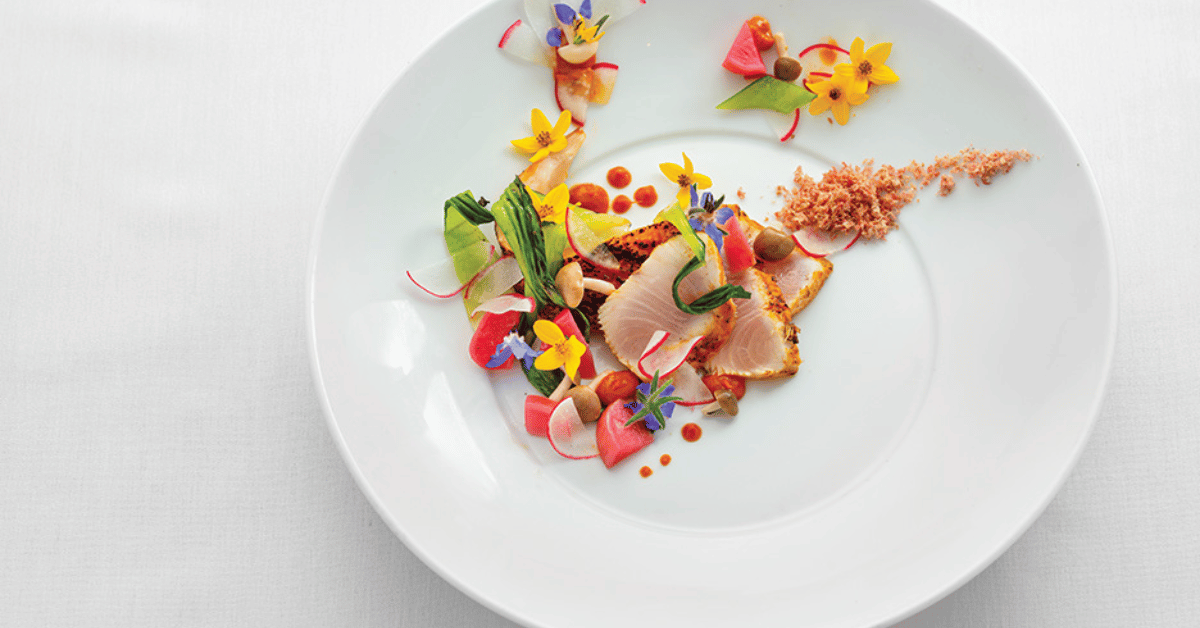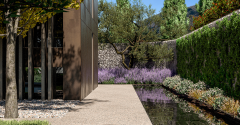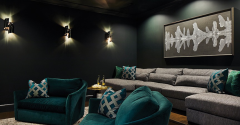

Candy Swick
Candy Swick & Company
2063 Main Street, Sarasota, FL 34237
941.954.9000 | www.candyswick.com
Listing by Candy Swick

Sarasota, Florida
18TH FLOOR SWEEPING BAY VIEWS! Unobstructed water views will forever grace this residence poised directly on Sarasota Bay. With only one floor above, this prime location lies beneath the protection of the penthouse and is high enough to see the Gulf of Mexico. This is the only double unit in the building with two garage parking spaces and over 3,000 square feet of interior living space plus two balconies. The combined Van Gogh & Renoir layout has three bedrooms, three baths, a study, dining, living and family rooms. Sensational water views set the stage in the main living area, perfect for entertaining. Located in a secure, 24-hour guard gated, Downtown Sarasota building with amenities.
www.candyswick.com.
$2,500,000
Candy Swick originally appeared as an Elite Agent in the
Unique Homes Spring ’19: Elite edition.
See her page here.
Slanted ceilings have made their way outside of the attic, now in living, dining and bedrooms. Designing under these slopes can be tricky, but there are ways to get around it — and even use them to make the room more elegant and spacious. Here’s how:
1. Light and Airy
Whenever you’re tight on space, adding a coat of white paint to the ceilings and walls can make all the difference. Not only does it add a simple and natural tone, but it’s malleable to design the room to your style.
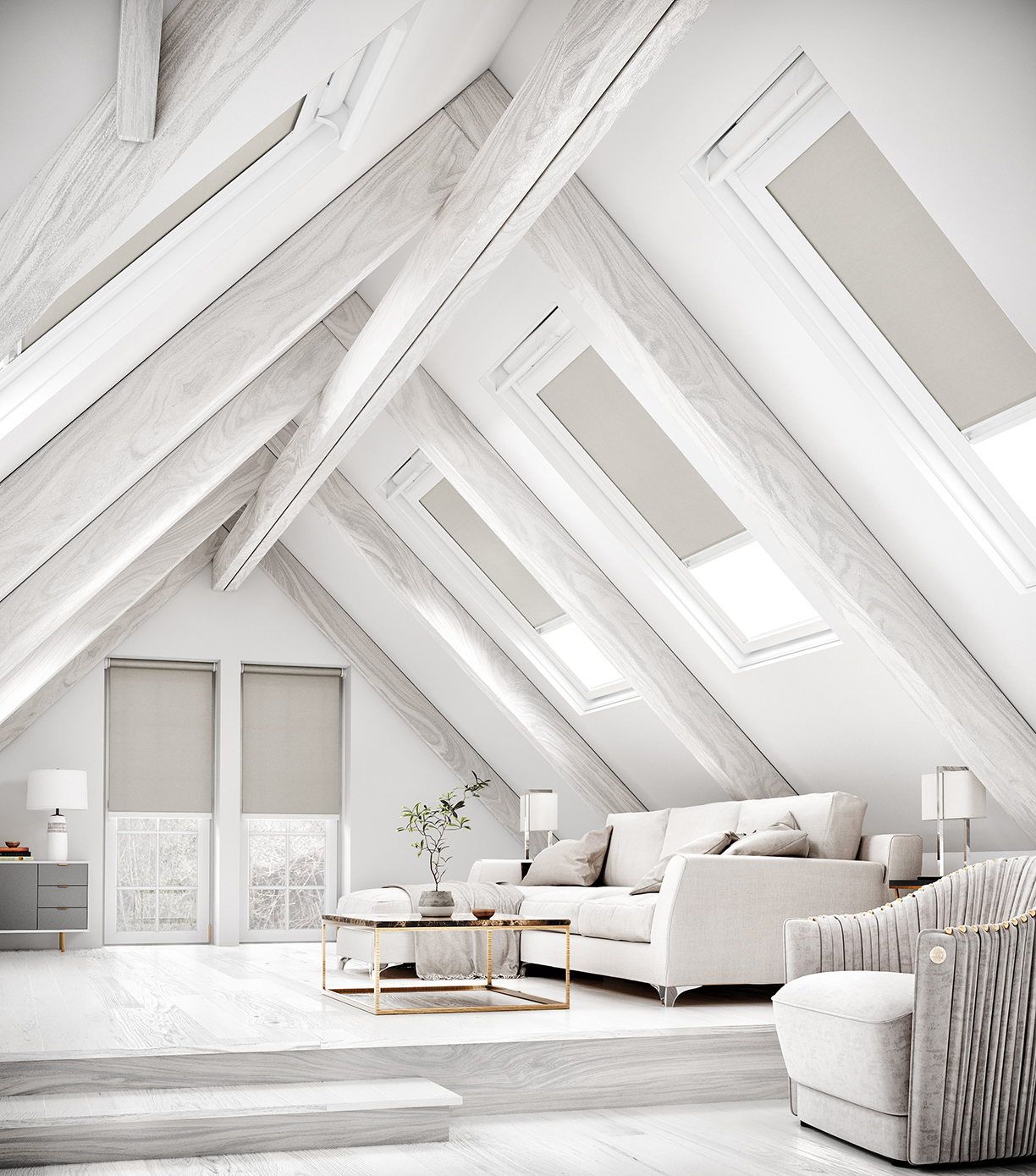
Photo courtesy of English Blinds
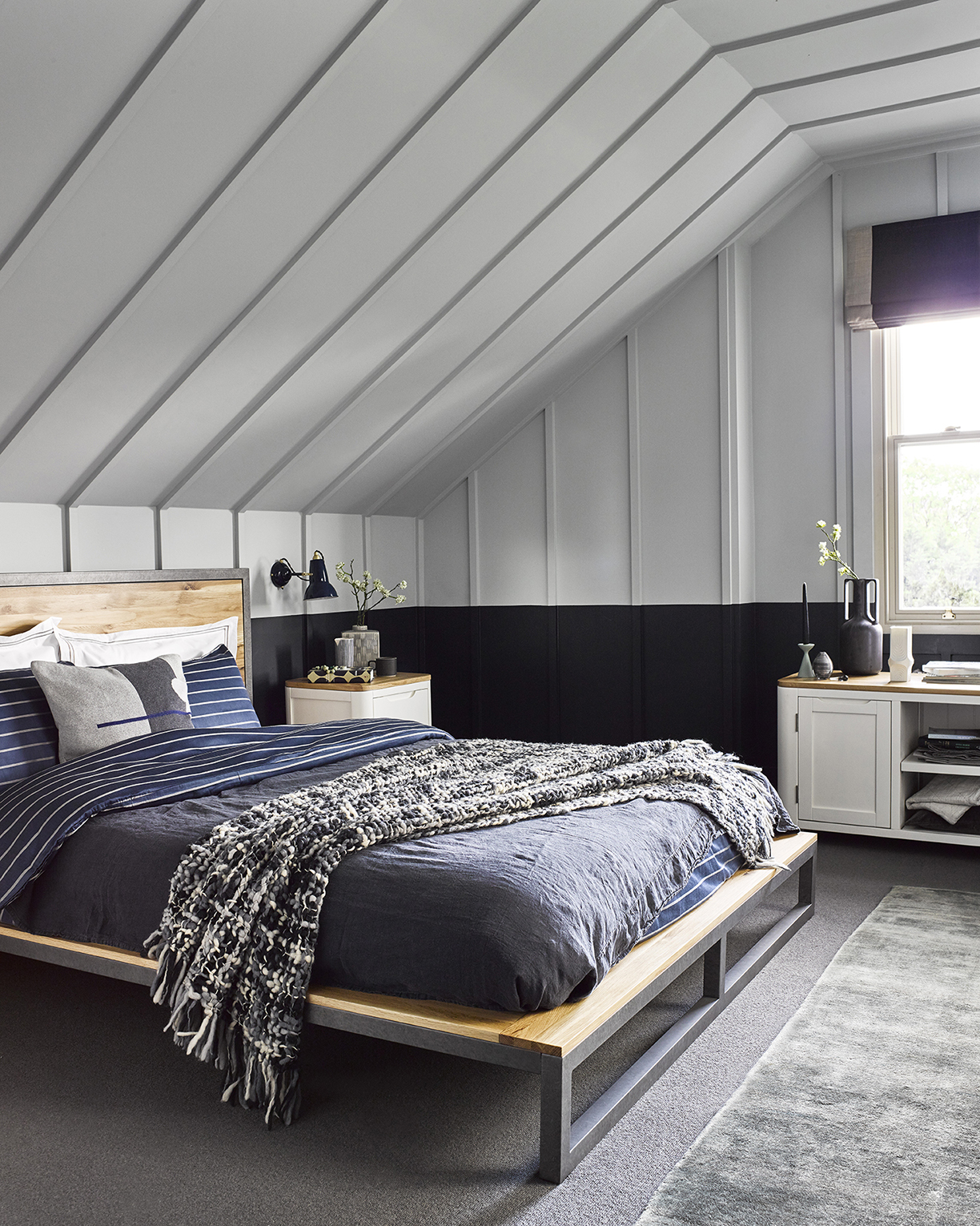
Photo courtesy of Oak Furnitureland
The blank canvas that comes with white walls and ceilings allows for limitless creativity. Create a nautical look for a more relaxed vibe, or add bold colors to make the space stand out. With a white canvas, slanted ceilings can do no harm.
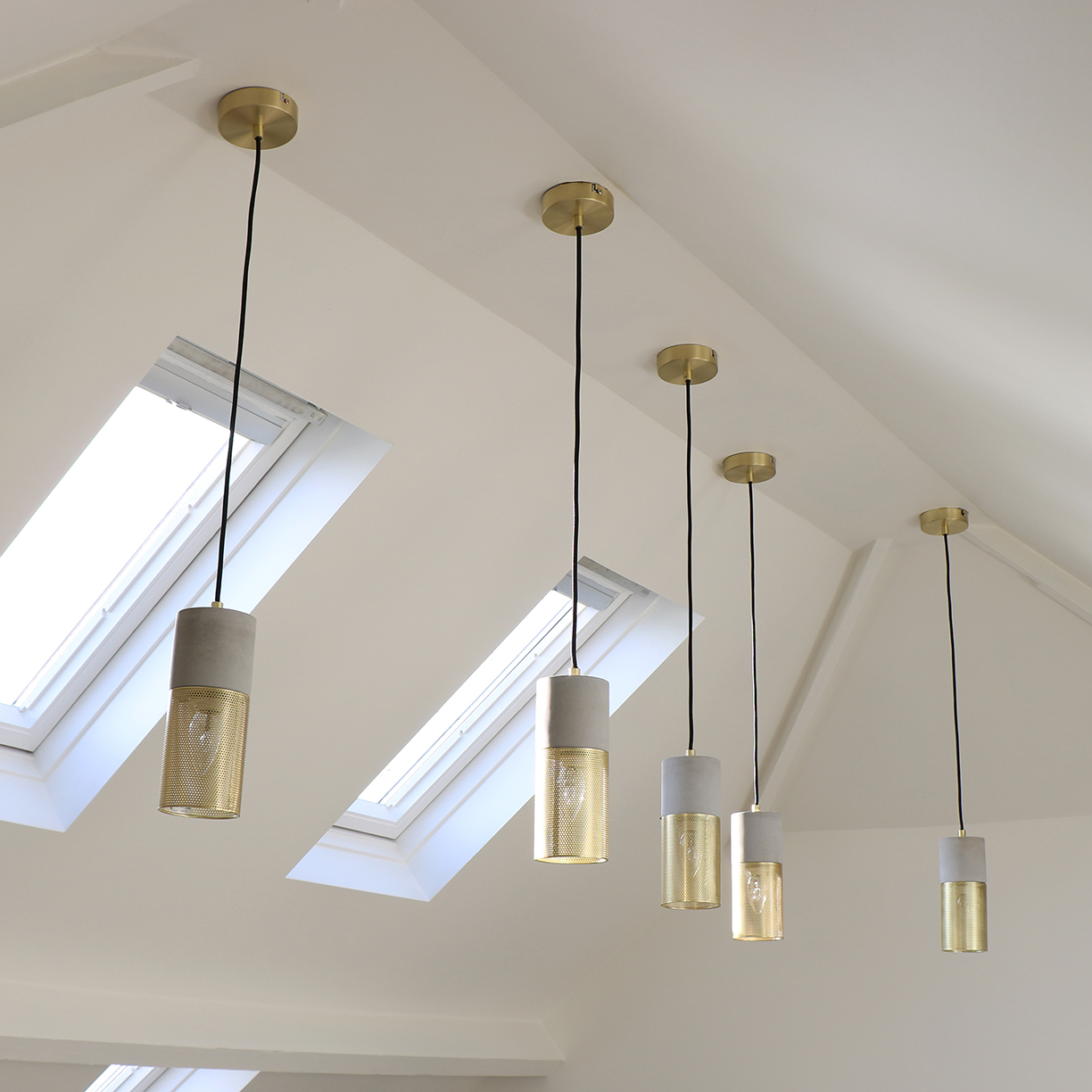
Photo courtesy of Melody Maison
2. Lighting the Room
Lighting a room can be the most difficult challenge when designing a space under slanted ceilings. Many don’t think they can use any overhead lighting, since the ceiling is on a slope. In reality, however, it isn’t impossible — it’s all a matter of picking the right light fixtures.
This is a simple yet elegant style for light fixtures that work perfectly on slanted ceilings. The wires can slightly slightly bend, so that they hang naturally.
Another great way to add natural light under slanted ceilings is with skylights. They flood the room with natural light in the daytime and add a unique and stylish look to the space.
3. A More Natural Look
Sometimes, however, it’s better to let the slanted ceilings add a unique design to the room, rather than hide them with an all-white hue. Adding wooden beams can do just the trick. When the ceilings aren’t too low, wooden beams won’t emphasize the height, but add a beautiful finish to the room instead. Light or dark browns for the wooden beams create a beautiful, natural look that goes with any style.
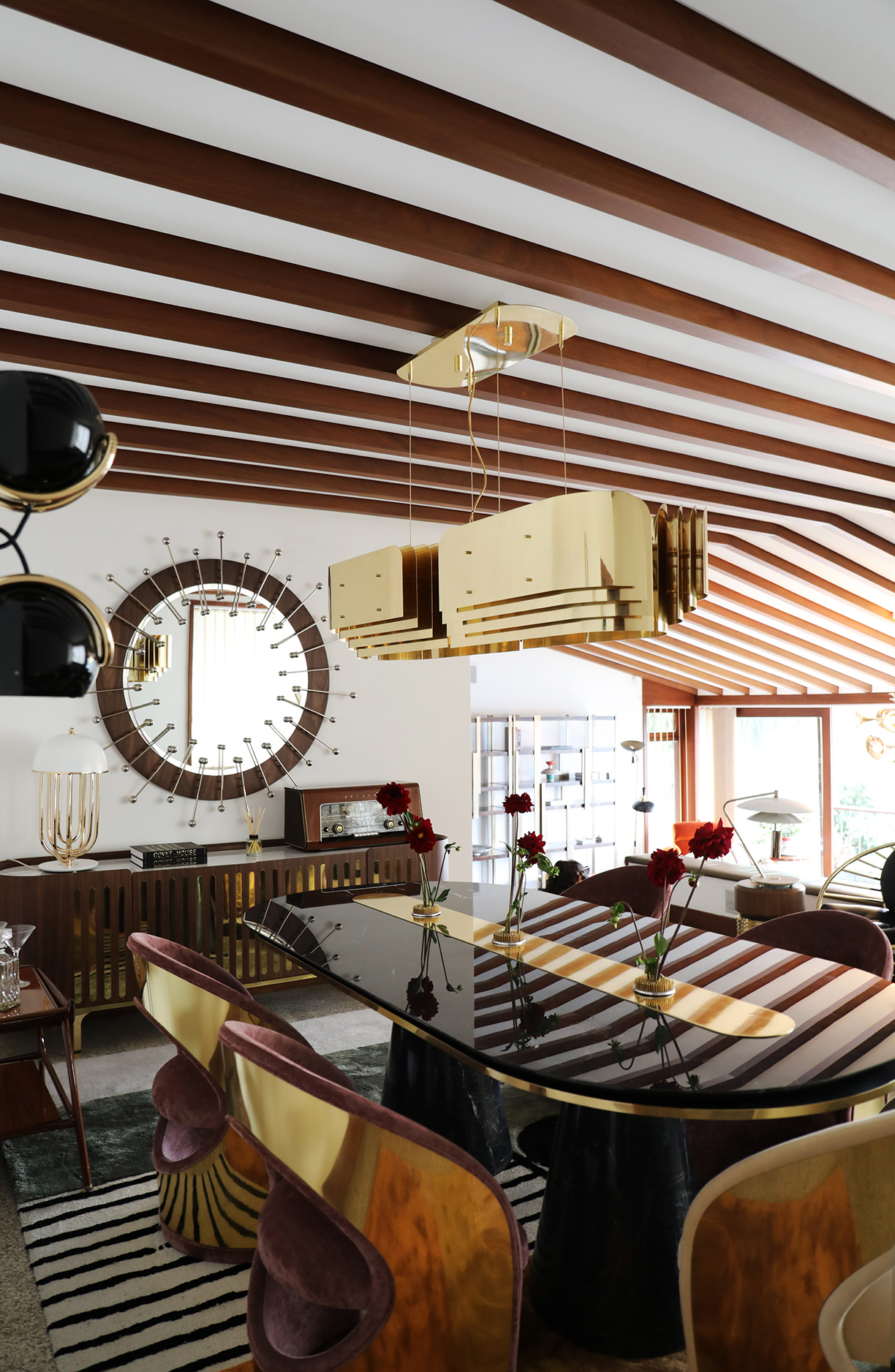
Photo courtesy of Covet Valley
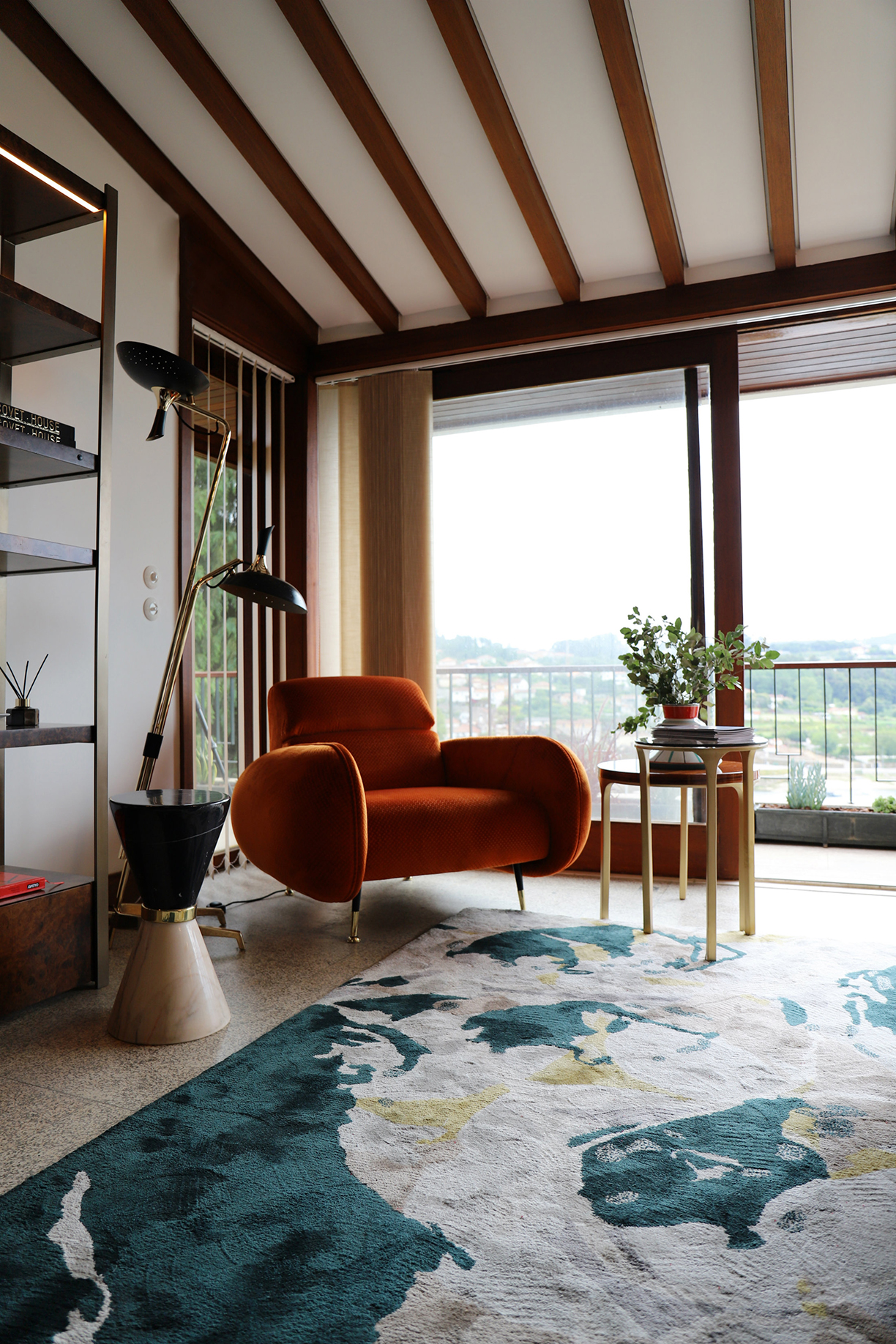
Photo courtesy of Covet Valley
Adding yellow accents to a room can be tricky: while it can transform a dull design to a bright and airy space, anything too harsh can cause the opposite effect. Luckily, there’s a foolproof way to designing a space with the color, and it can be a breath of fresh air whenever you walk into the room.
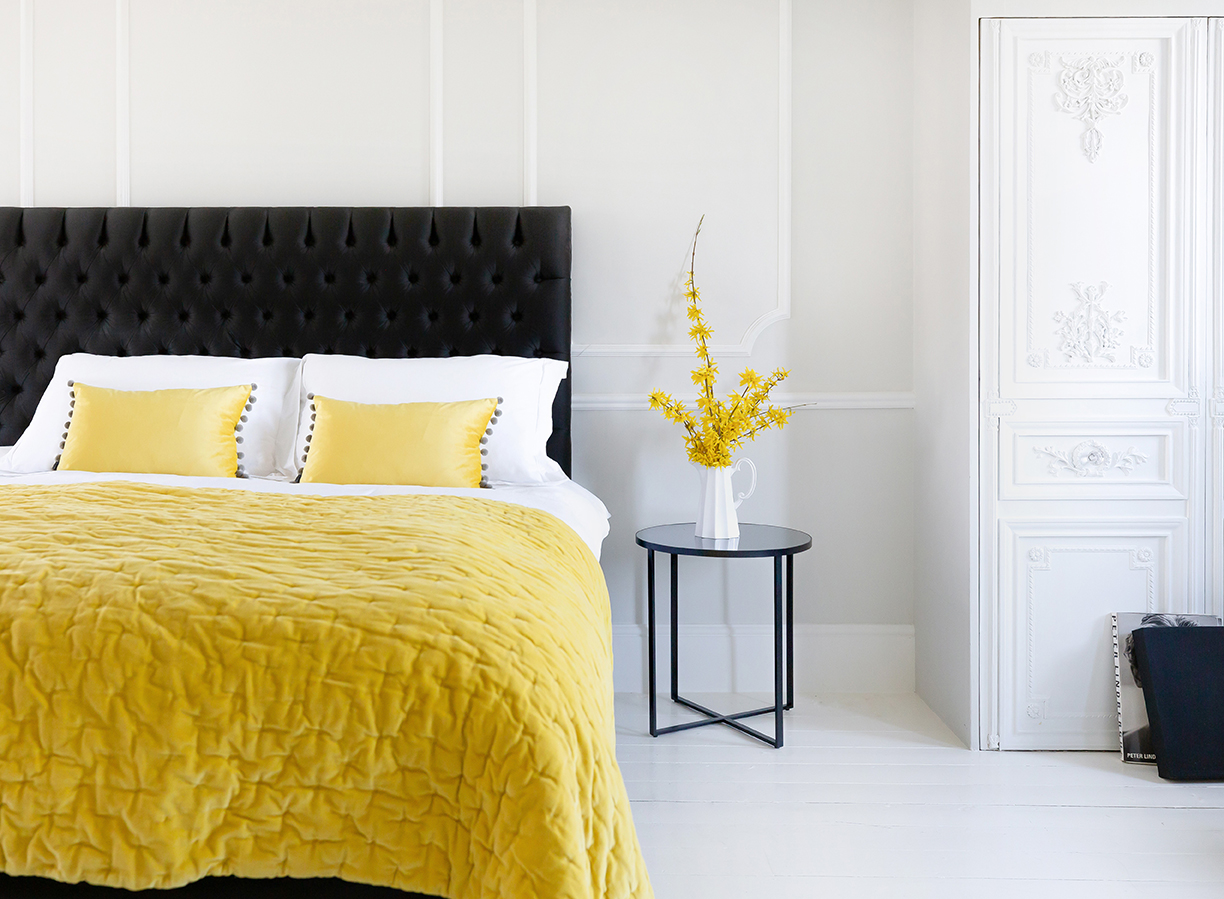
Photo courtesy of The French Bedroom Co.
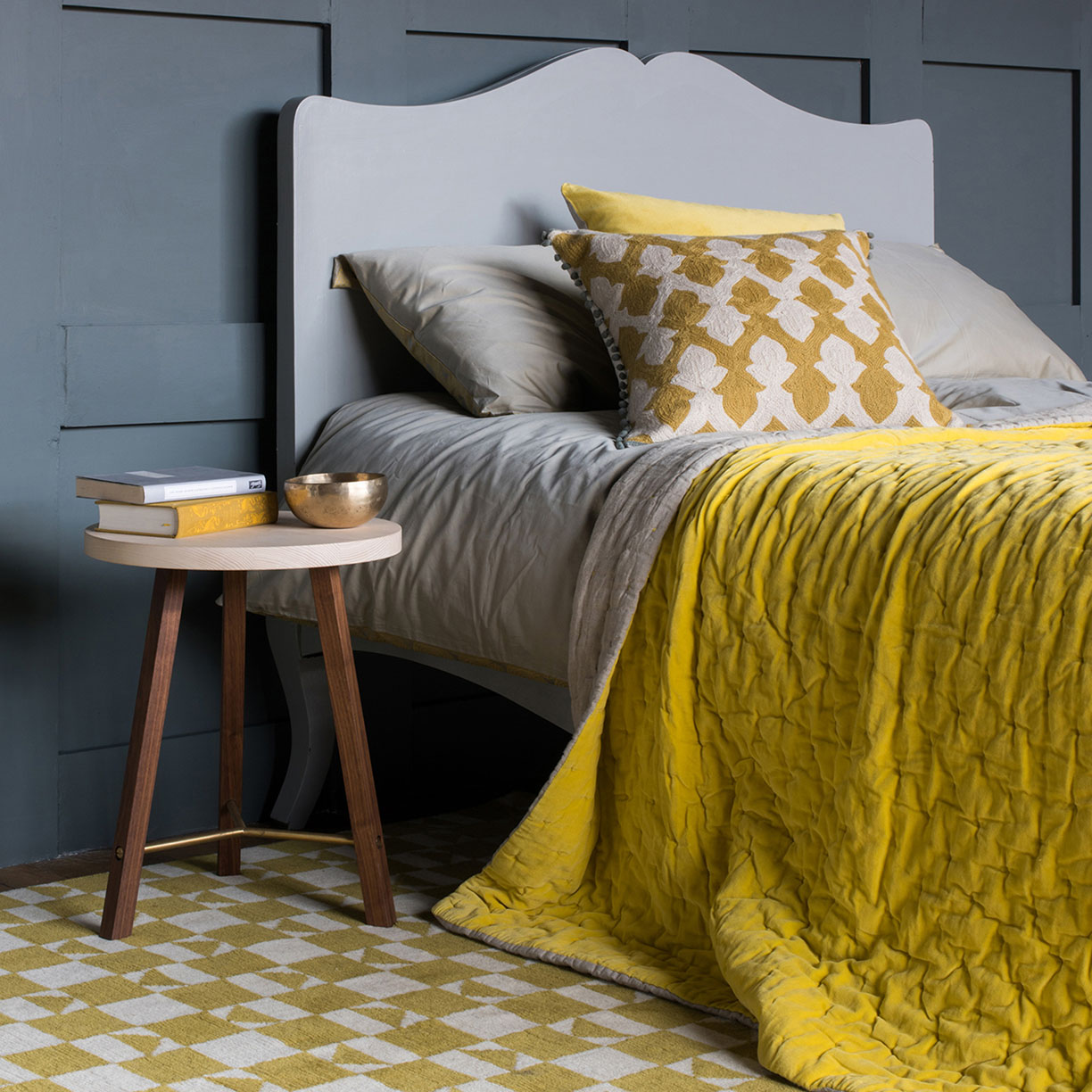
Photo courtesy of The French Bedroom Co.
When it comes to bedrooms, it can be difficult to choose the palette. While yellow walls may be too overbearing, yellow anywhere else may not be enough to do the trick. That’s why these two bedrooms have designed their spaces with two main categories: a bright yellow and a neutral color, such as grey, white or brown. They both balance each other out perfectly, with the yellow still adding that pop without being too harsh. The combination of hues adds to the comfortable and stylish decor, creating a space that’ll both brighten you up in the morning and be a calm retreat at the end of the day.
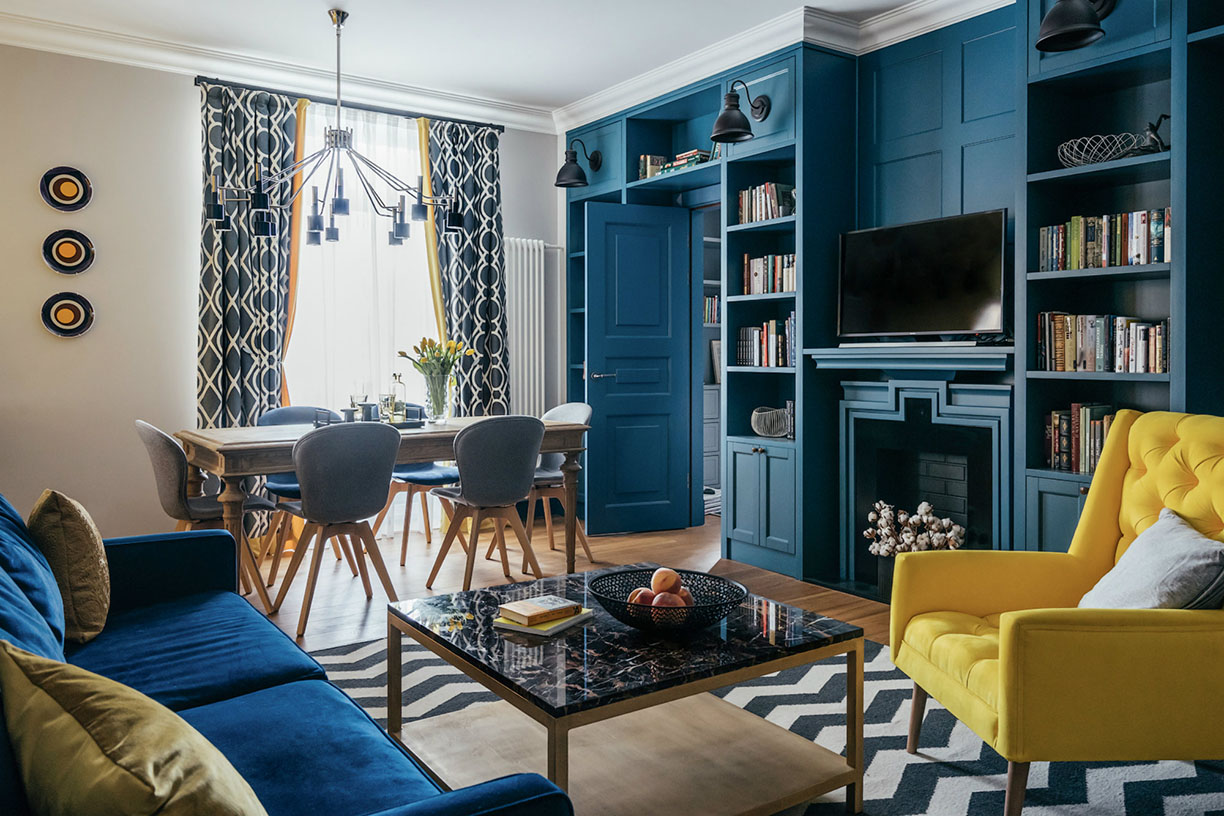
Photo courtesy of DelightFULL
Creating a living room with just a hint of yellow can add the perfect accent. This room that’s almost completely blue has a beautiful addition found with the bright yellow chair. It creates the perfect balance between the colors, creating a space with a unique and alluring charm.
The main trick with designing a room around the color yellow is to pick the right tones. The yellows shouldn’t be too harsh or overbearing, otherwise it will bring an unappealing style to the space. Meanwhile, the main colors of the room should be more neutral yet distinct from the yellow. Clear whites and dark browns and neutral grays play well here.
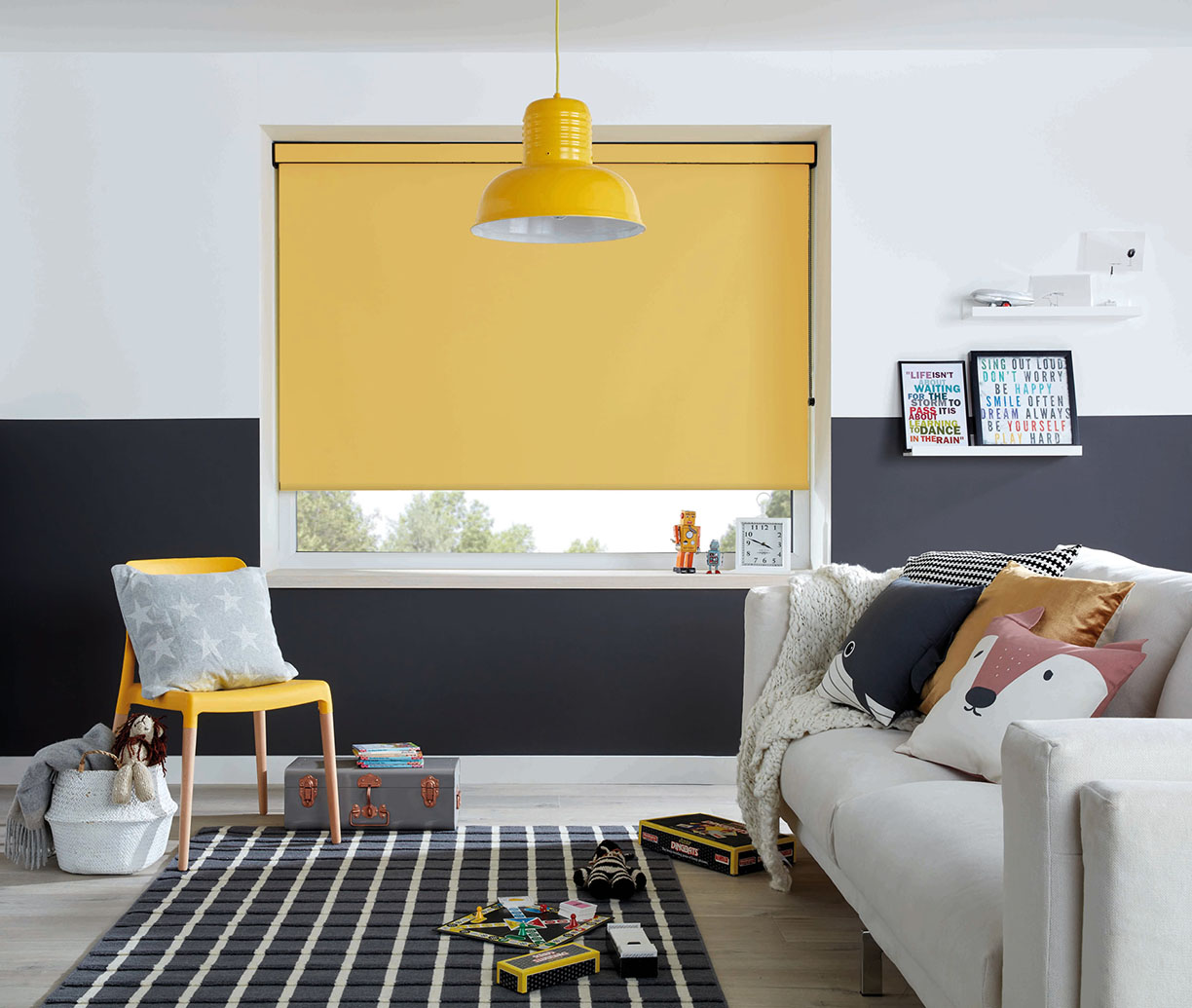
Photo courtesy of English Blinds
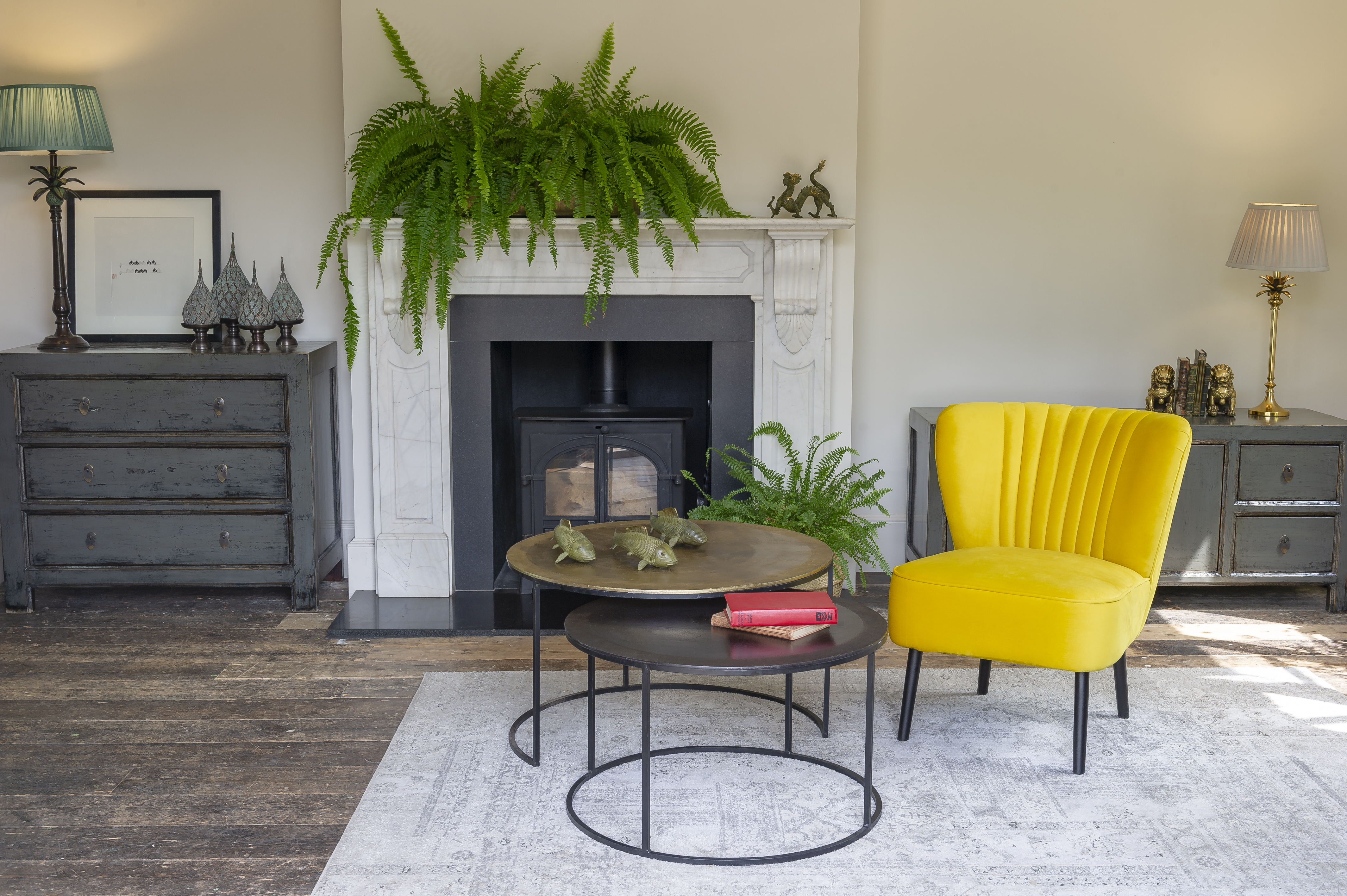
Photo courtesy of Orchid Furniture
Incorporate fresh plants to add another hint of color without making the space look disorganized or messy, and you’re on your way to creating the perfect space that’ll brighten up your day the moment you walk in.
Over the past few years, stained glass has gone from a dusty antique item in an old home to modern works of art. With the industry making a comeback into the luxury scene, interior designers are challenging themselves to design a space around the ornate glass. Here are a few different ideas:
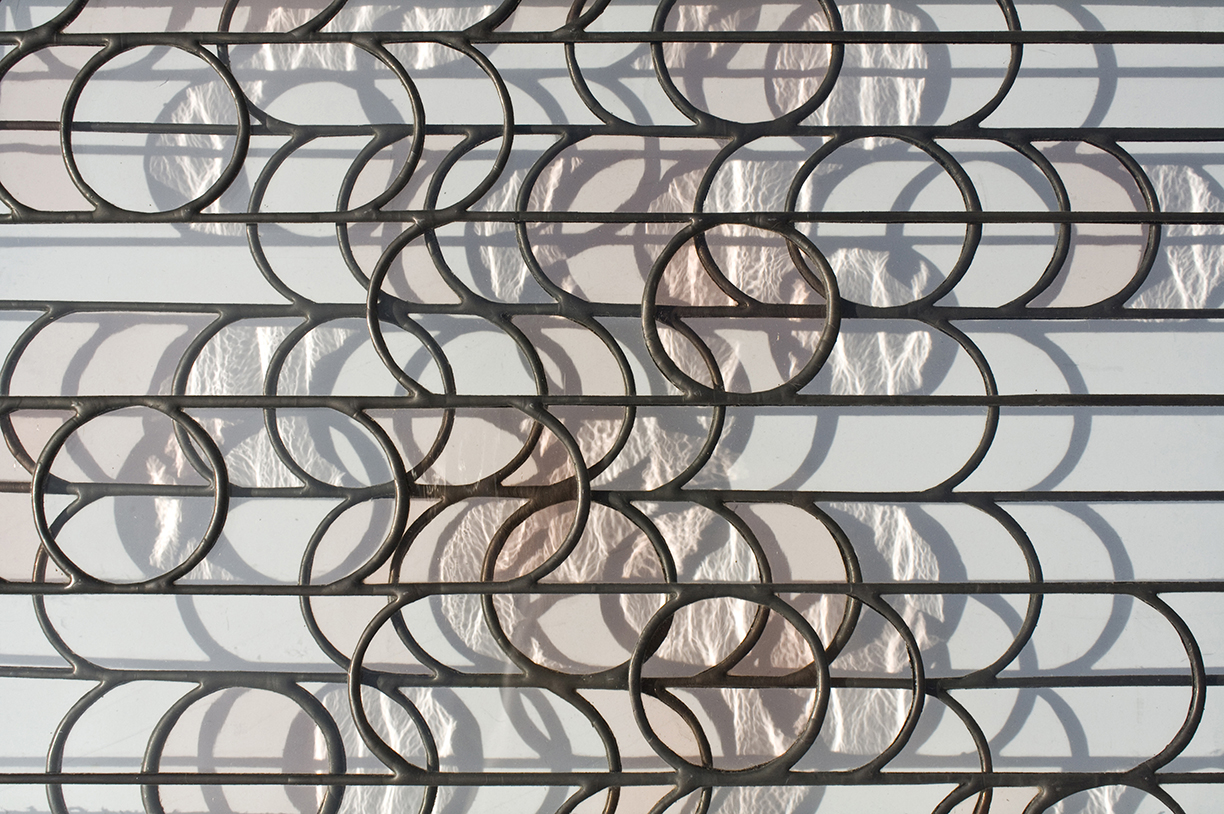
Photo courtesy of Bespoke Glass
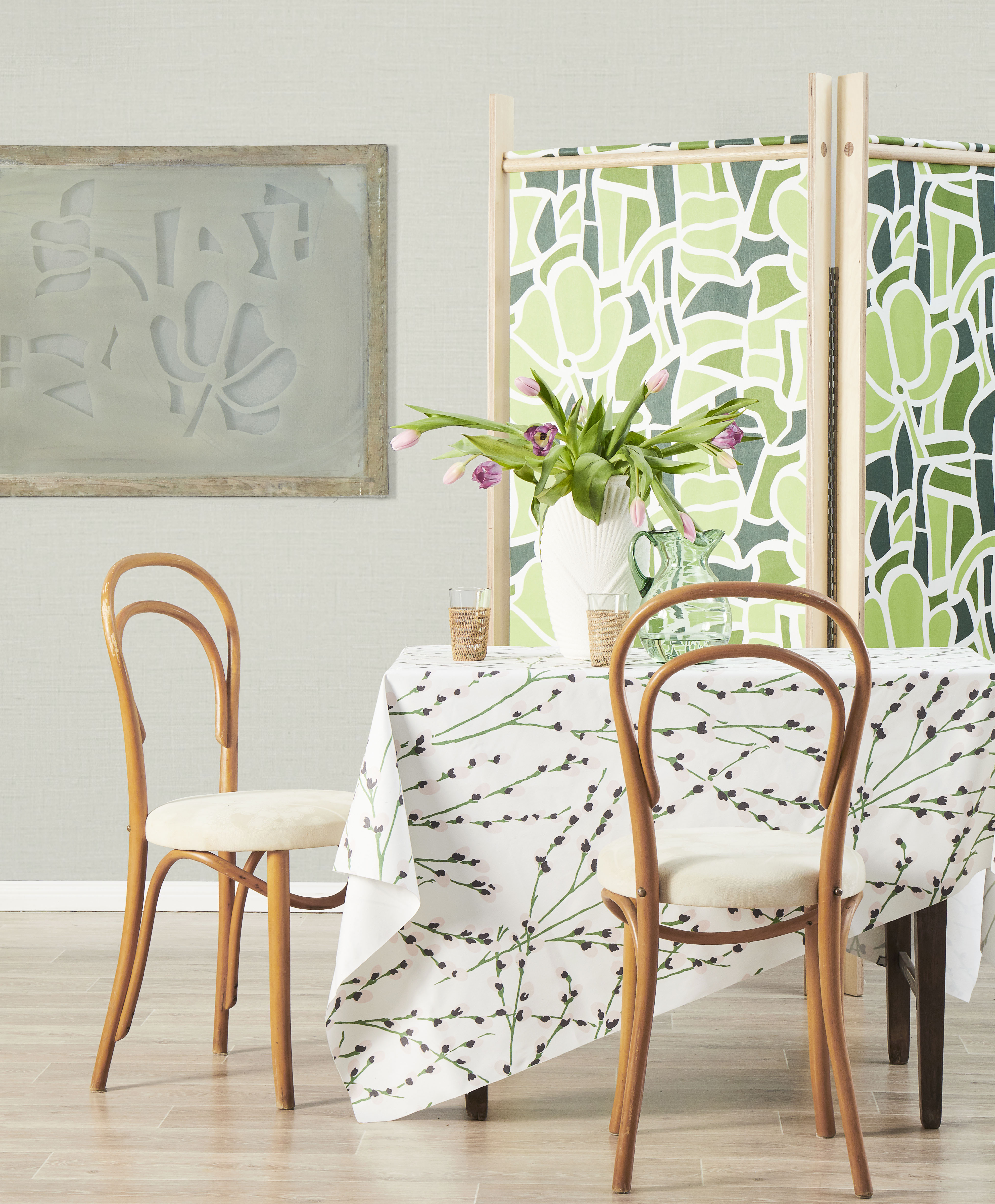
Photo courtesy of Florence Broadhurst Fabrics
Stained glass can add a pop of color and make your space feel both cozy and modern. The green colors on this partition add a bright finish to the room, making it the centerpiece for all the other furniture to gather around it. While still looking modern, it brings back an old-school style to provide a sense of comfort as well. Nowadays, adding a piece of stained glass to a home brings a unique style unlike any other — one that brings you back in time, while also staying ahead of the times, too.
Located in New Haven, Connecticut, the Blake Hotel adds a unique style to the space by featuring the work of Bespoke Glass, a studio-based business in Brooklyn, New York. The different shades of blue colors and the glimmer of the glass adding a retro look that transports you to a different time in the past, while also staying current and on-trend. The placement of the blue pieces adds an edgy and one-of-a-kind appearance. Not only is it a partition, but it’s a work of art in its own right.
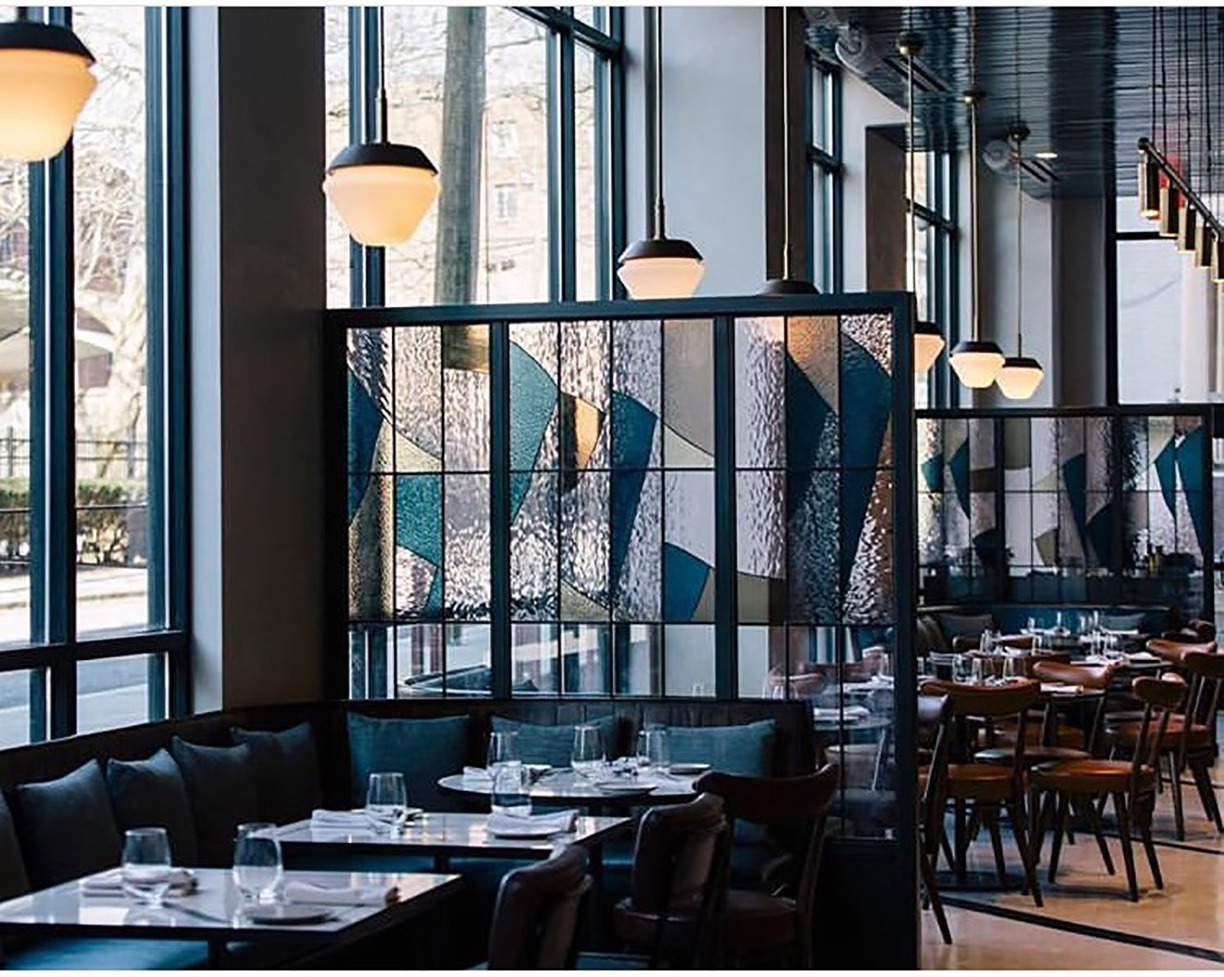
Photo courtesy of Reed McKendree
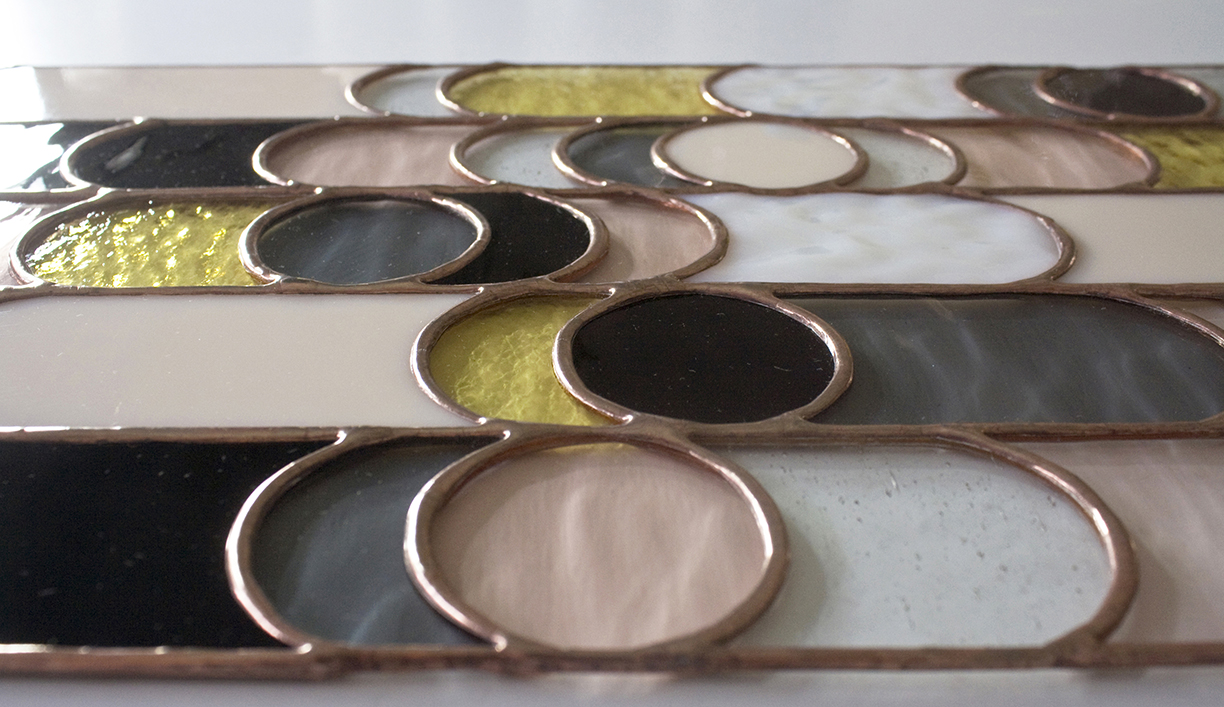
Photo courtesy of Bespoke Glass
By changing the designs stained glass was normally confined to in the past, studios and interior designers around the globe are beginning to take out the dusty antiques from their storage bins and create works of art instead. With so many different styles and colors, the possibilities are endless.
While dark-colored walls can add a depth to a room, it can sometimes be tricky to style around them. Every dark-colored wall brings a heavy tone with it, and it’s important to know how to design the space so has a balanced tone. While it’s a designer’s challenge, here are different rooms that prove it can be done:
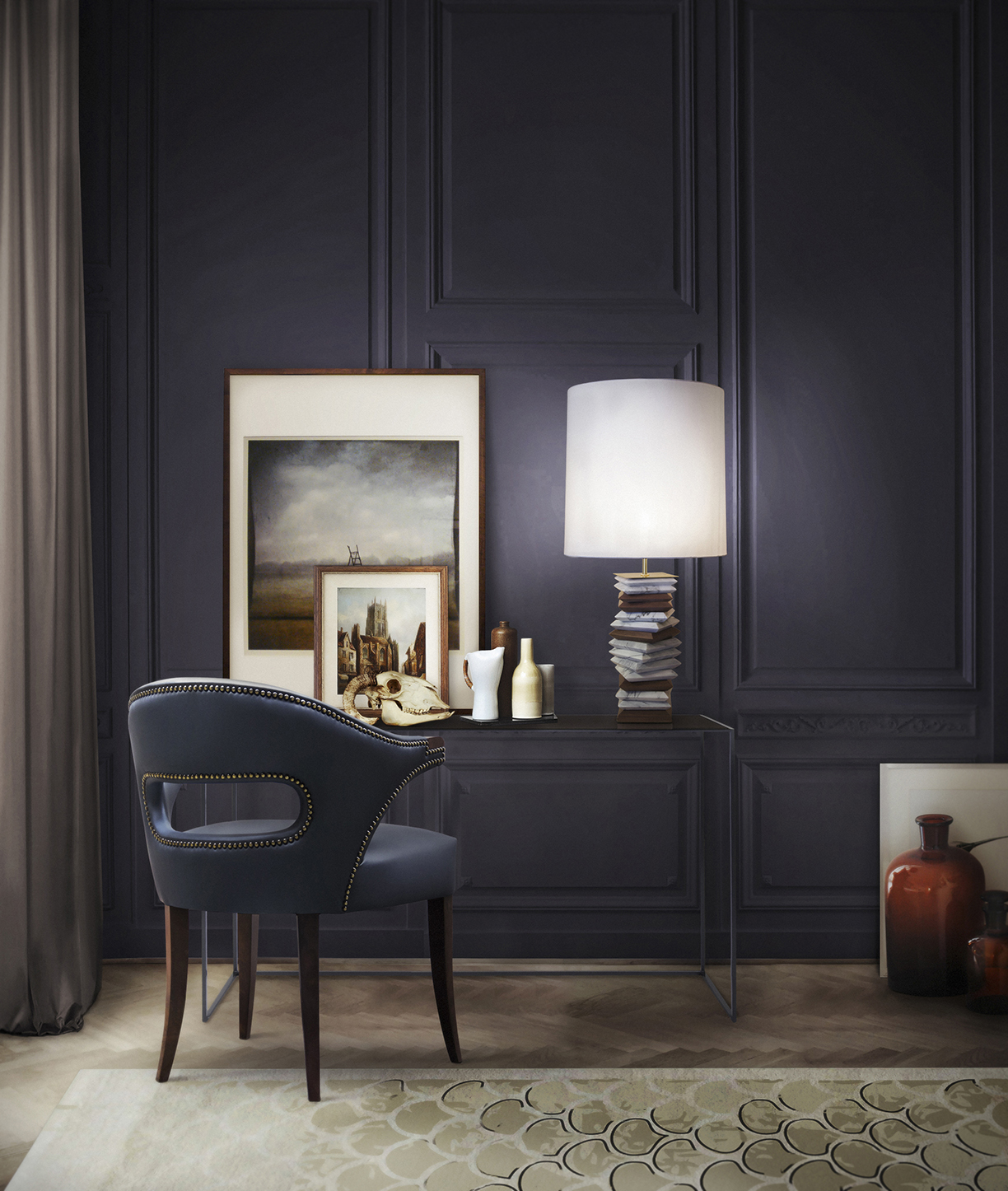
Photo courtesy of Brabbu Design Forces
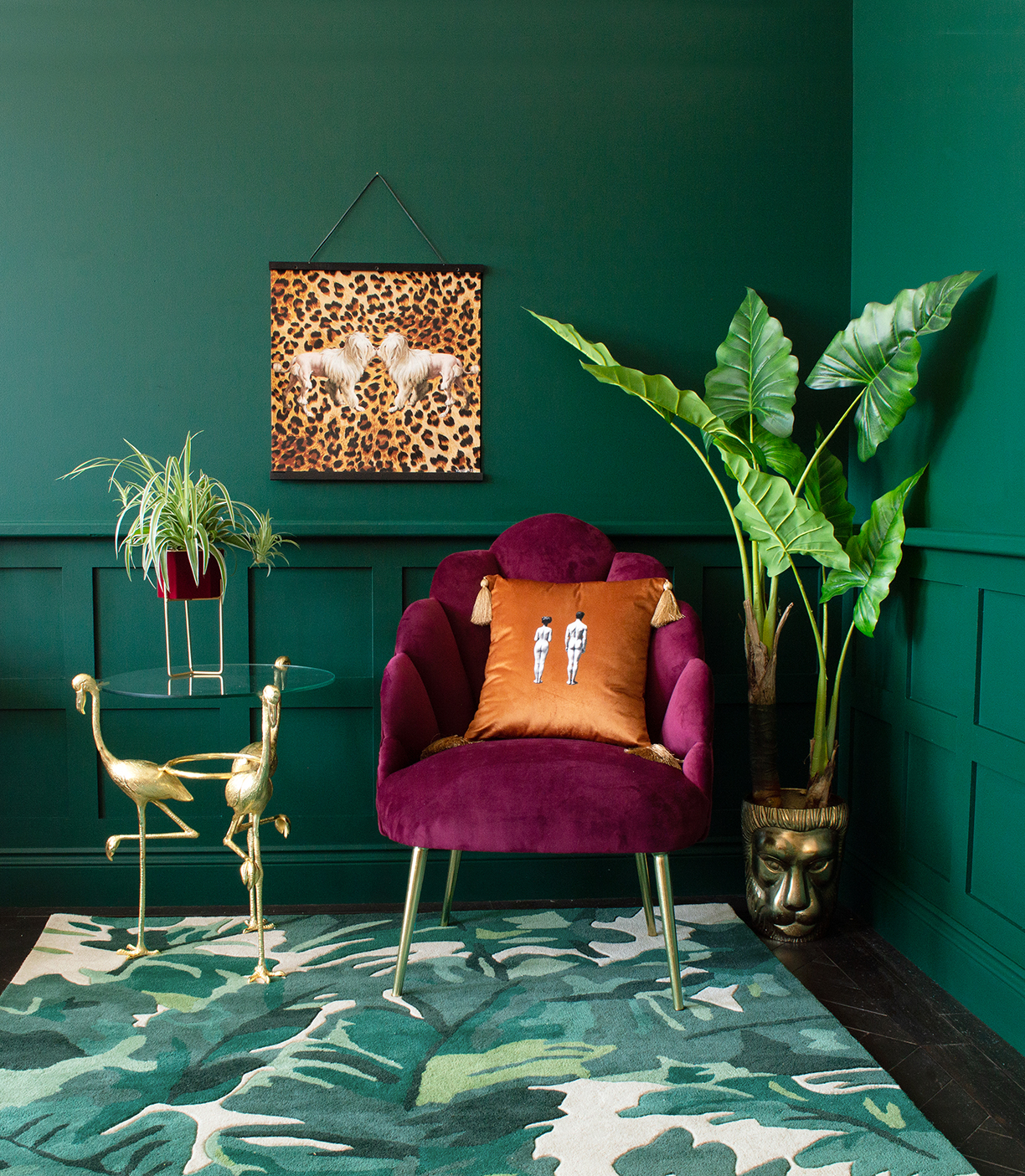
Photo courtesy of AUDENZA
1. Brighter Colors, Warmer Tones
When designing any room, it’s crucial to look at the colors you’ll be using and make sure they balance each other out. This is especially so for rooms with dark-colored walls. While they add a great tone to the space, too many darker tones can make a room feel cold and uninviting.
The perfect balance of colors involves a mixture of both darker and lighter colors, such as this bright red chair in front of a dark green backdrop. The chair adds a pop of color, making the dark colored walls feel warm and inviting.
1. Light versus Dark
Balancing the lighter and darker tones can be a challenge, since having too much of one can overwhelm and wash out the other. These baths represent the perfect balance of tones. The darker walls counteract against the polished bathtubs and light fixtures. This not only adds a great balance, but brings a rich and inviting depth of color to the room.
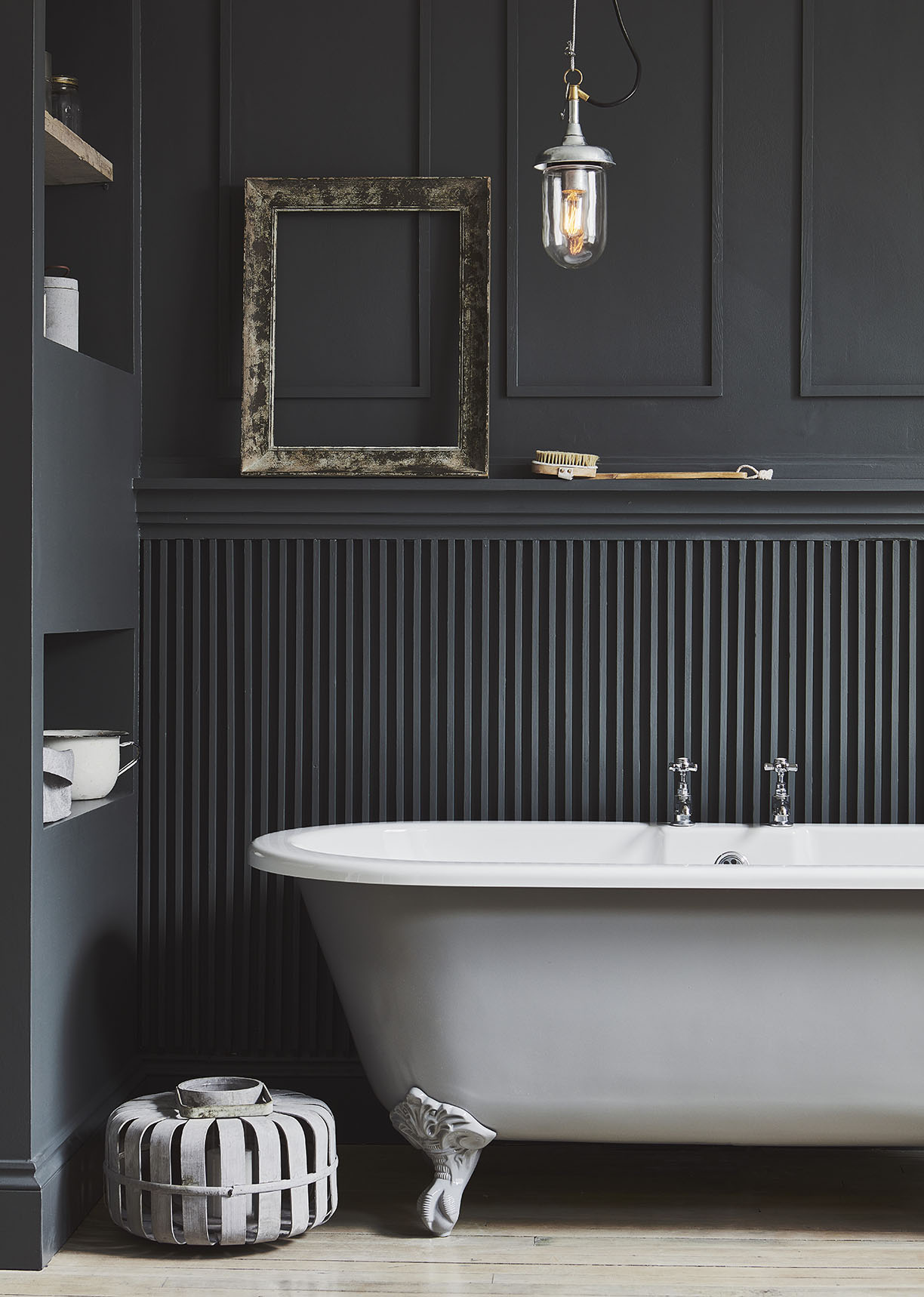
Photo courtesy of Garden Trading
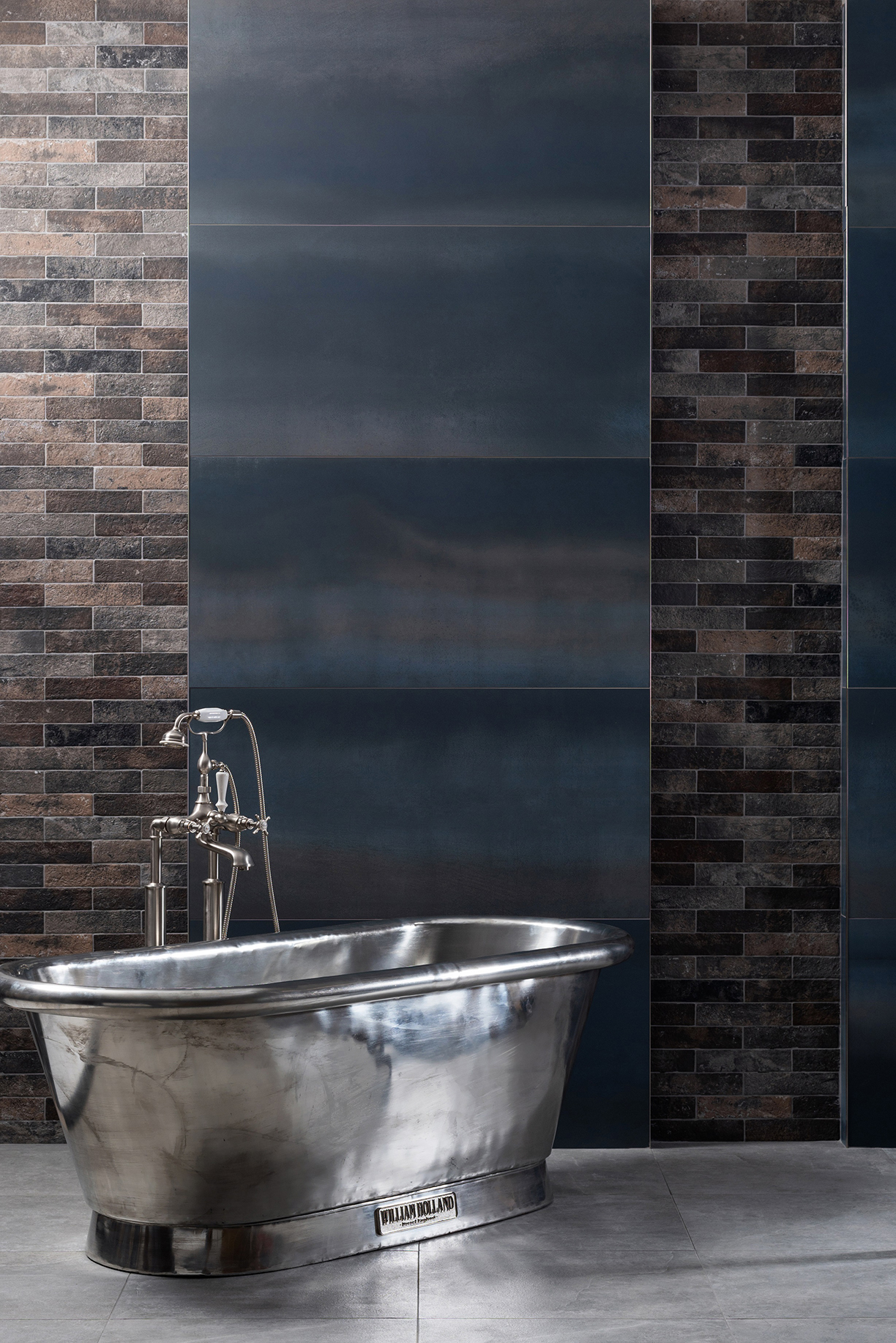
Photo courtesy of Original Style
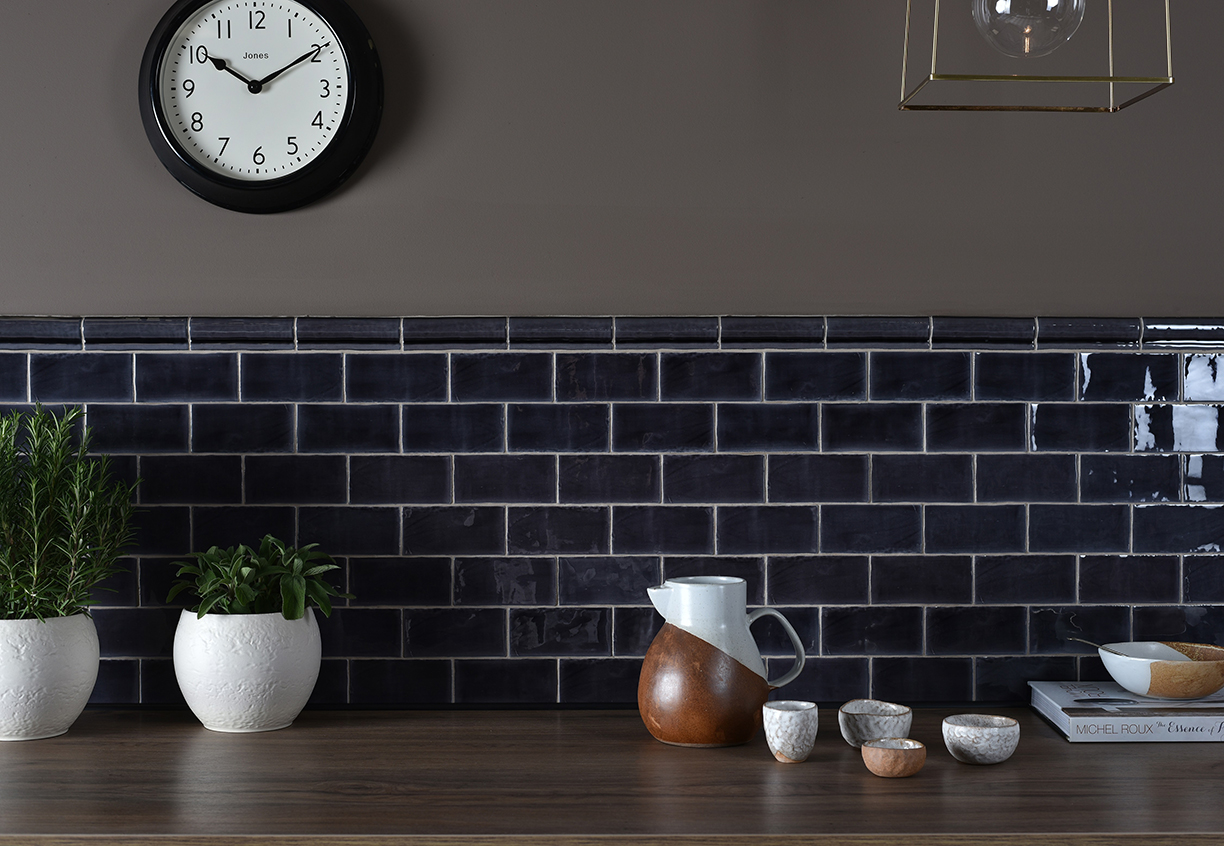
Photo courtesy of Original Style
3. Allowing Tones to Stand Out
When it comes to dark-colored walls, an immediate response may be to counteract the heavier tones with lighter statement pieces. While this can create a beautiful design, it’s important to allow the rich, dark colors to stand out. In this kitchen, there are minimal pieces that are lighter in color, allowing the walls to be full in color and provide a warm and cozy atmosphere.
With the push for wellness-oriented spaces around the globe, interior designers are looking for different ways to incorporate this rapidly-growing industry to their styles. While including more plants and flowers into the home is known to brighten up the atmosphere, some designers are taking this theme to the next level. Here’s how:
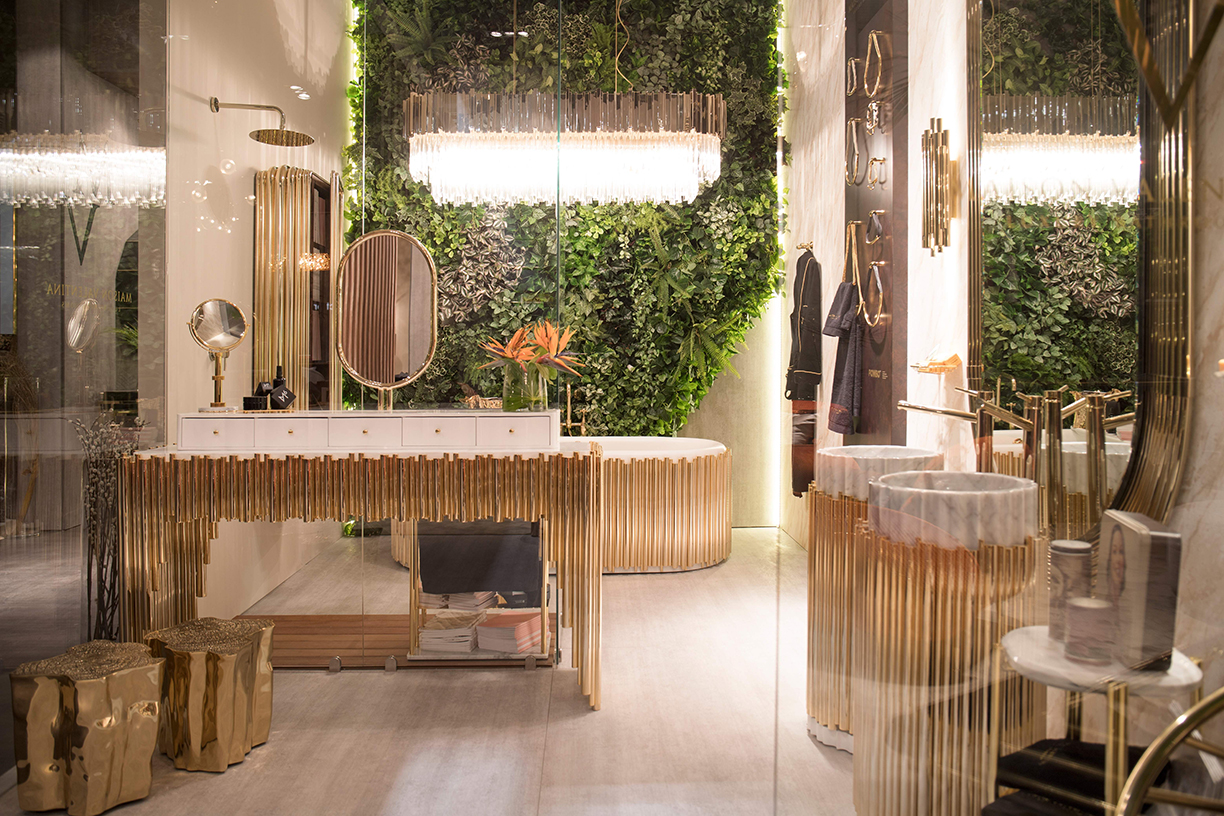
Photo courtesy of Maison Valentina
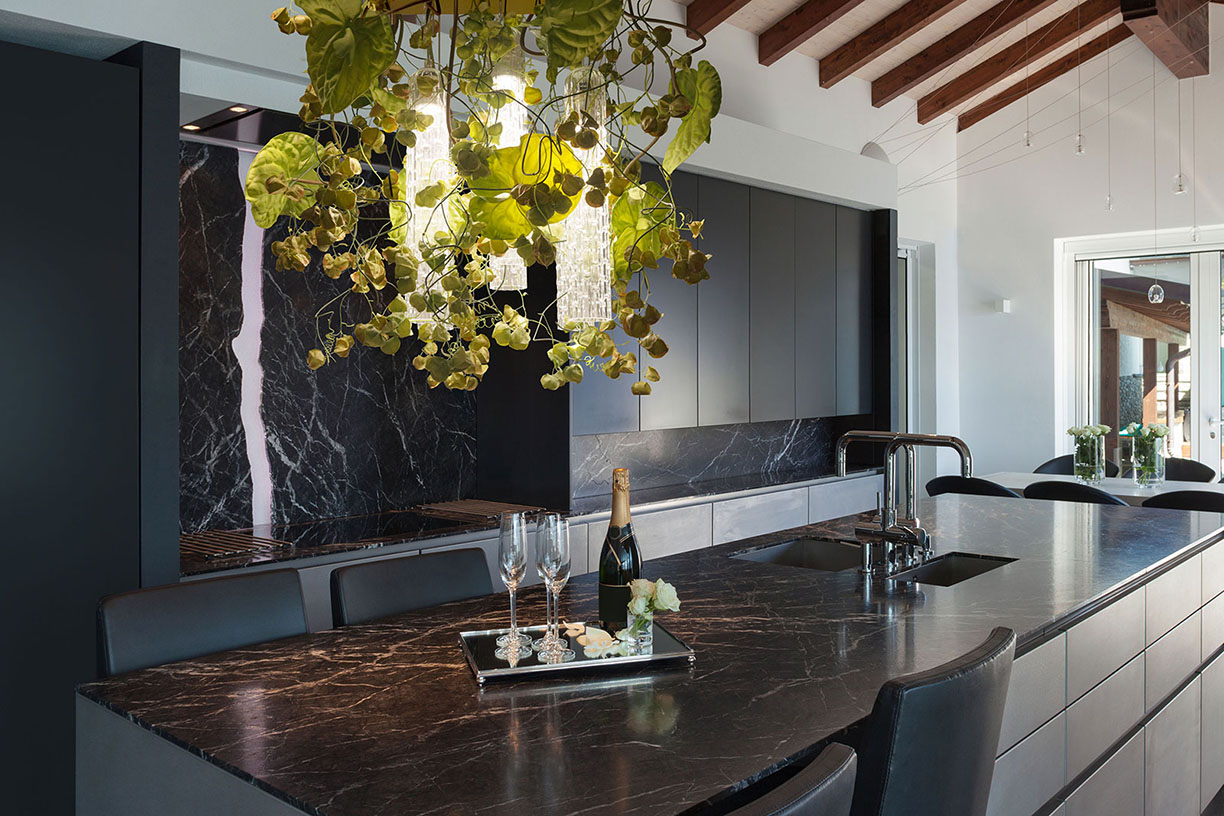
Photo courtesy of VG New Trend
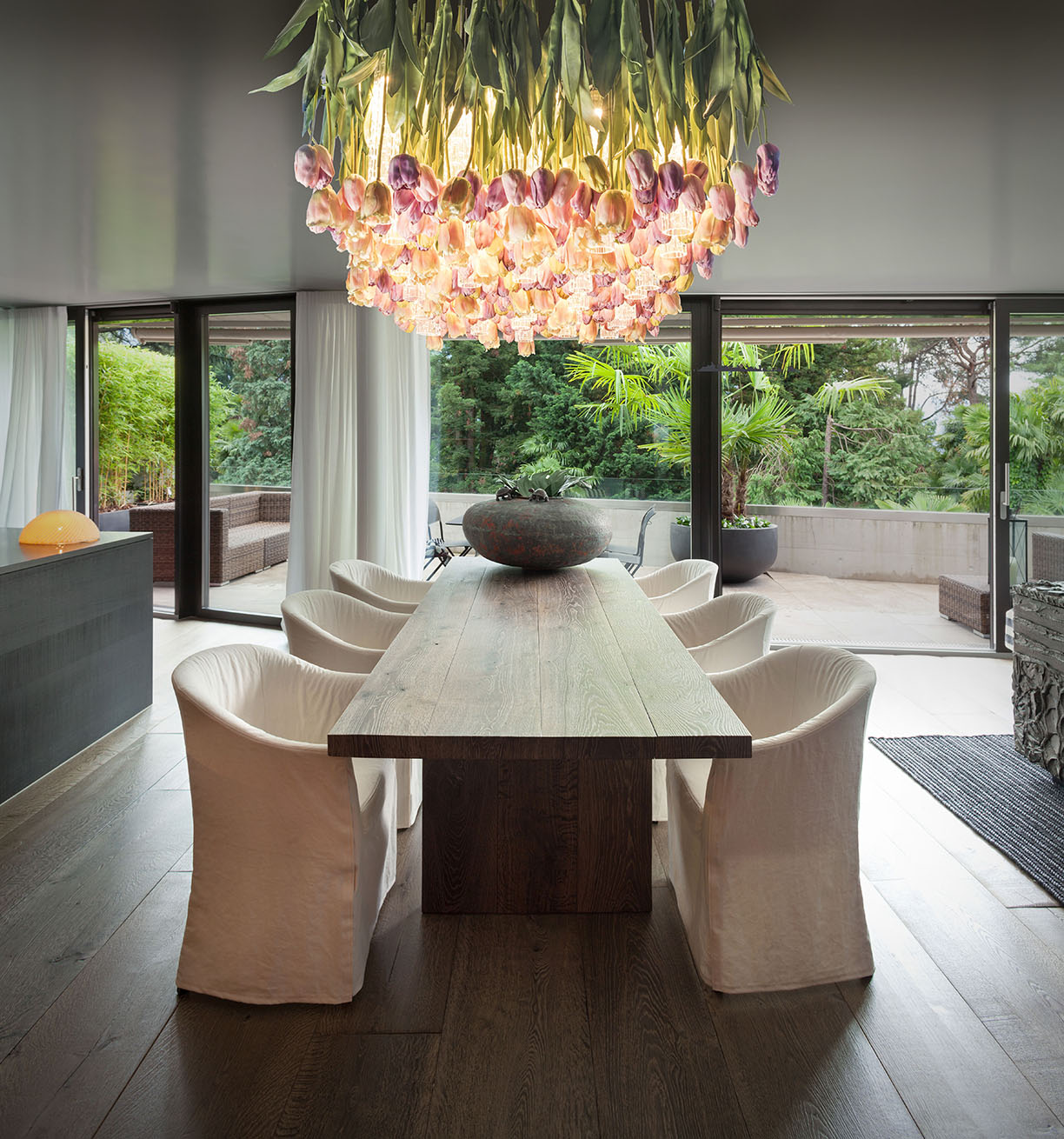
Photo courtesy of VG New Trend
When it comes to lighting, many chandeliers are starting to incorporate elements of nature to bring a more natural, elegant look. Both of these chandeliers are surrounded by vines and flowers, allowing the natural elements to be woven into the design. While critics may argue that the “unrefined” elements of nature decrease the elegance of the chandelier, these rooms prove them wrong. While remaining luxurious, the chandeliers’ design provide a warmer and more relaxed atmosphere.
Natural elements can also be incorporated into the wallpaper of a room, adding a bold yet comfortable piece to the space. Regardless of the individual’s style, nature-oriented wallpaper can be incorporated.
For a more feminine look, a bold, floral wallpaper does just the trick. The bright colors add a fun and relaxed style, while the natural elements of the flowers freshen up the atmosphere of the room.
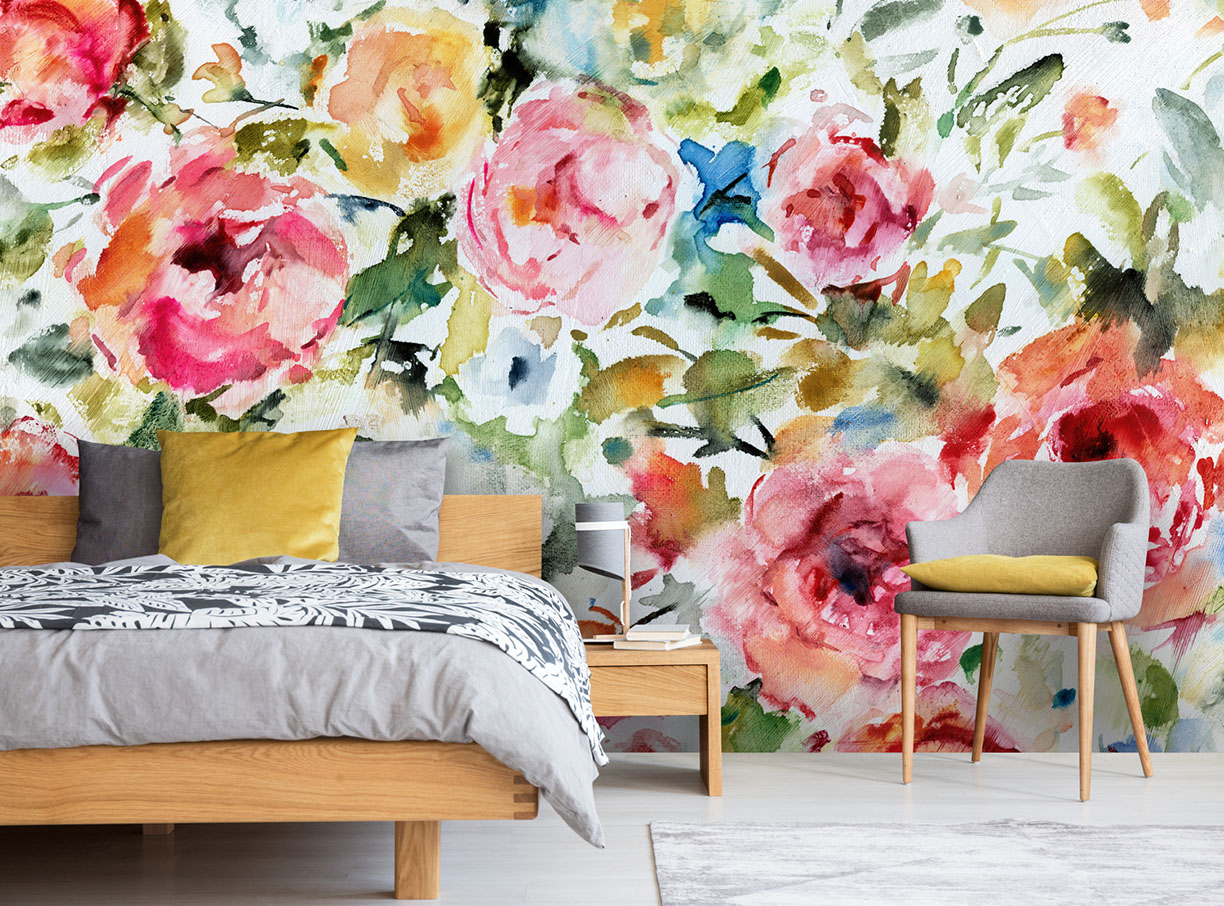
Photo courtesy of Wallsauce
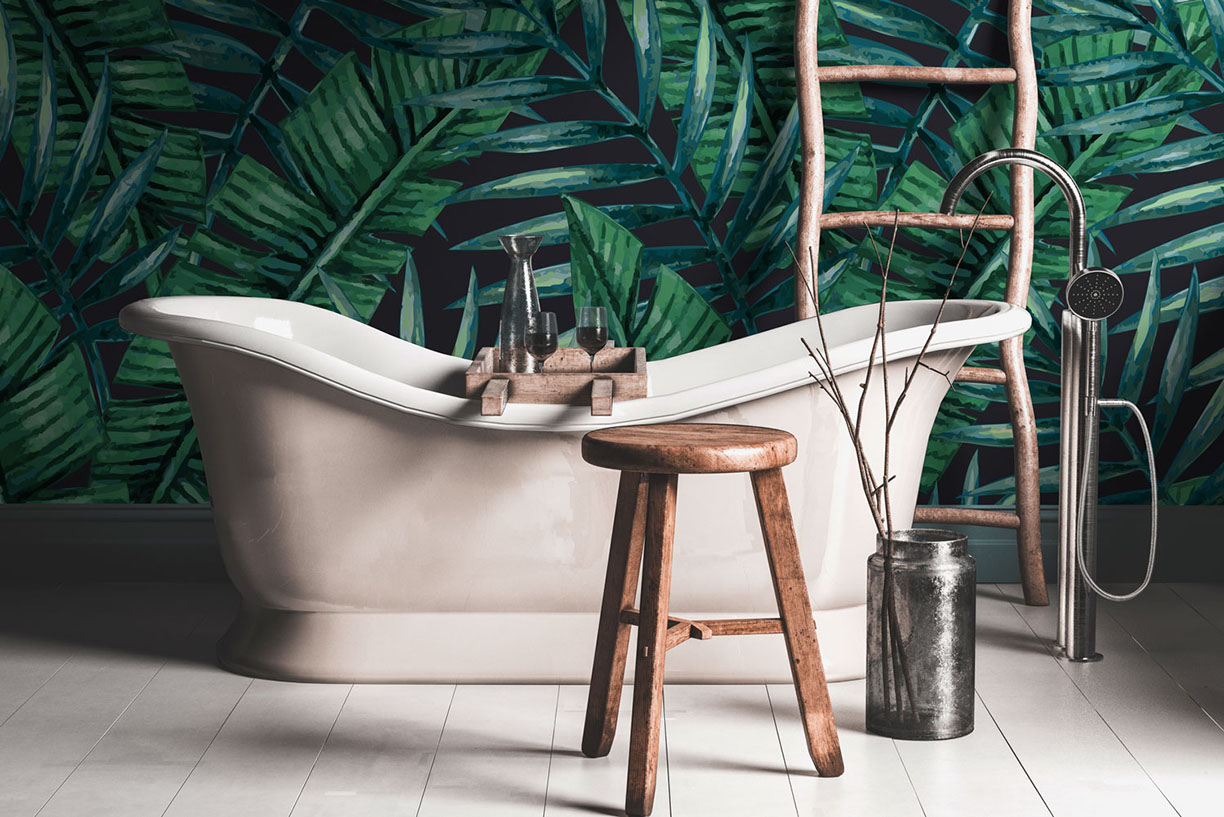
Photo courtesy of Wallsauce
If you’re looking for a less feminine wallpaper, however, incorporating nature to the room is certainly still possible. The darker wallpaper in this bathroom, although much less feminine than a floral backdrop, still adds natural elements to give the room a fresh look.
An often underrated way to style a room with is the flooring, which often ends up as a simple hardwood or tile design. While adding neutral tones to floors can allow other statement pieces in a room to pop, sometimes a bold flooring can be just what the space needs.
With that, here are some tips and tricks to designing a room around a bold floor or rug:

Photo courtesy of Lithos Design
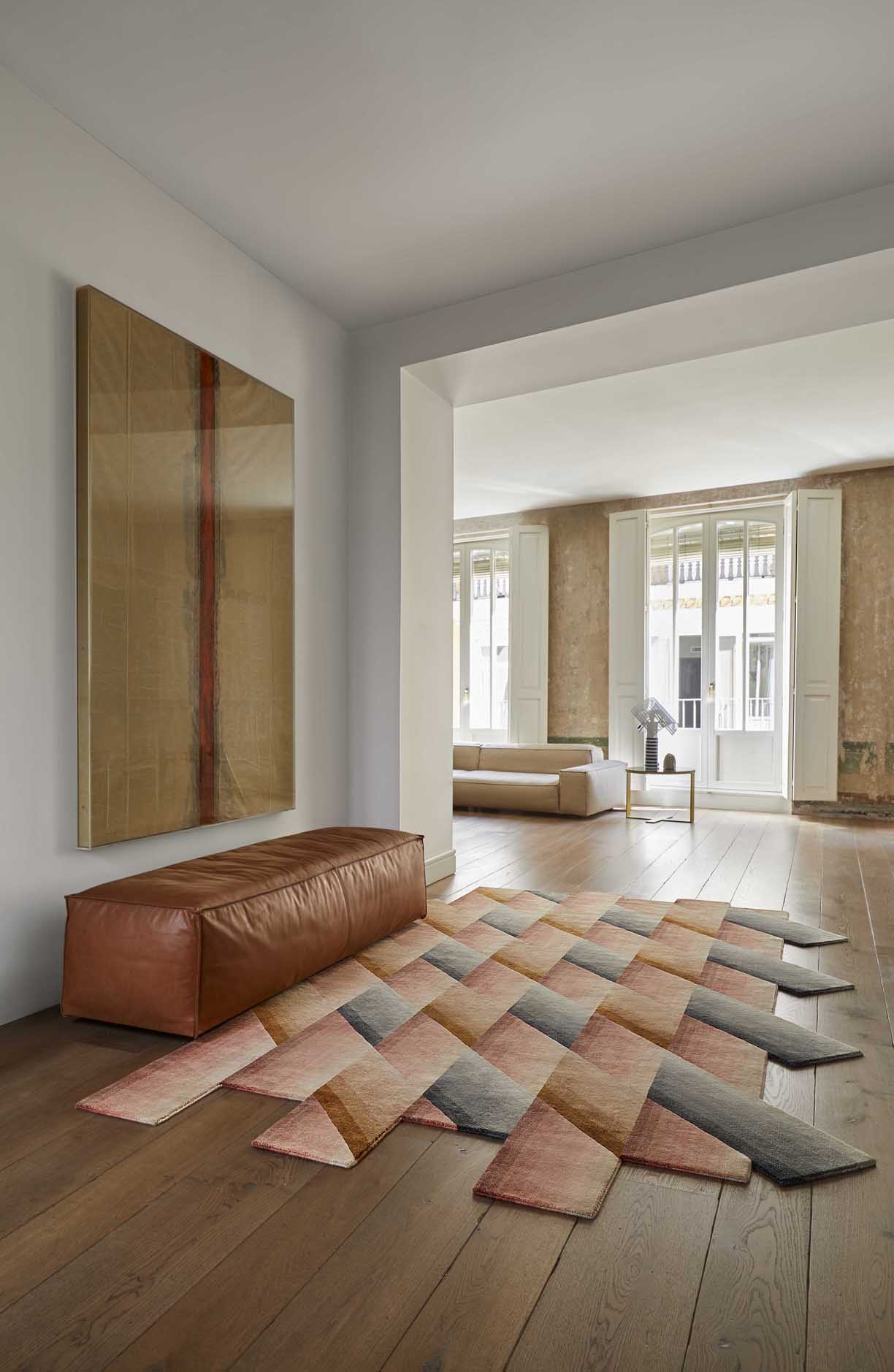
Photo courtesy of Chaplins Furniture
1. Matching Colors
When wanting to design a room with a statement piece, it’s always important to choose the piece that will pop before designing anything else. This way, you’ll know the colors and fabrics involved with the statement piece, and can design around that. In terms of flooring, a bold rug can make or break a room. Choosing the bold rug before anything else can ensure whatever you choose for the rest of the room will complement it.
With this space, the bold rug has two main colors, with gold being its secondary color. Instead of choosing another blue for the chairs, the designer chose to use the rug’s secondary color. This way, the blue rug still adds a pop, rather than being one of pieces with a similar color in the room. By using one of the more minor colors on the floor, there is still a wide variety of hues to have a creative and comfortable style.
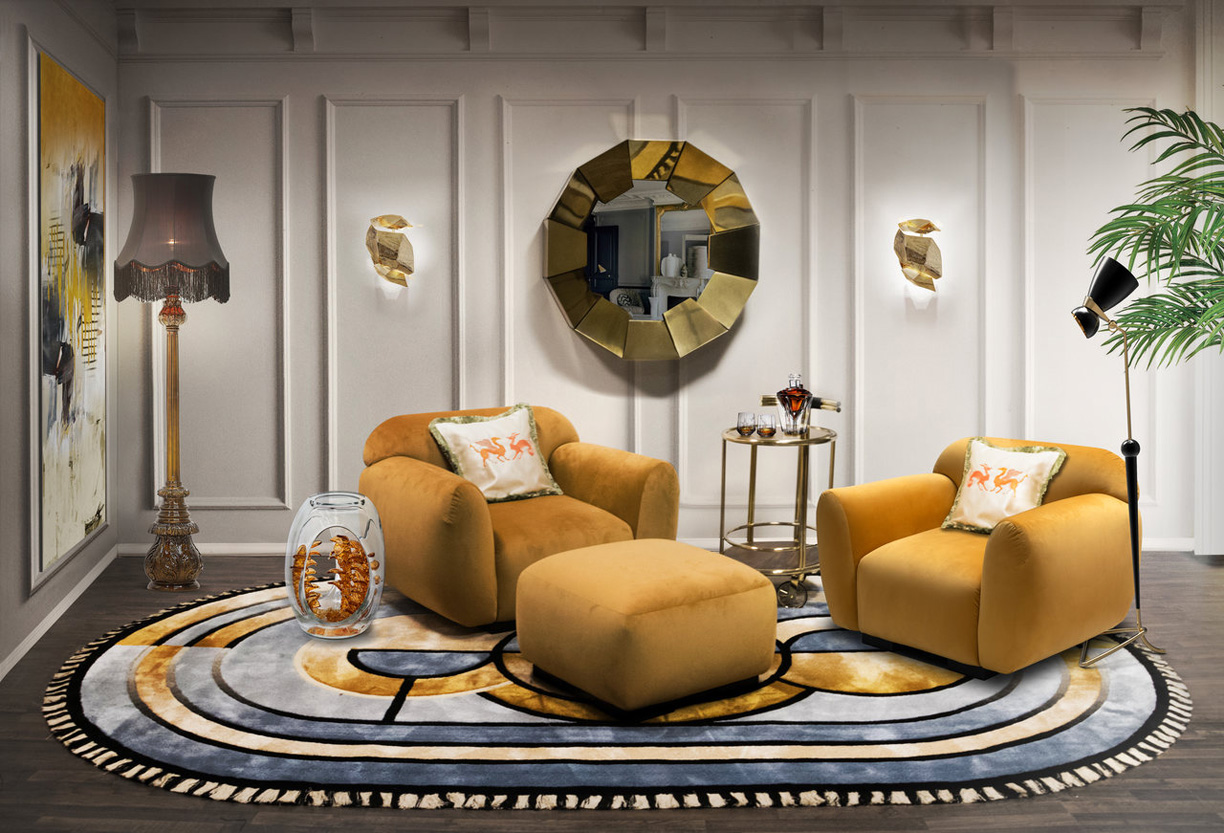
Photo courtesy of RugSociety
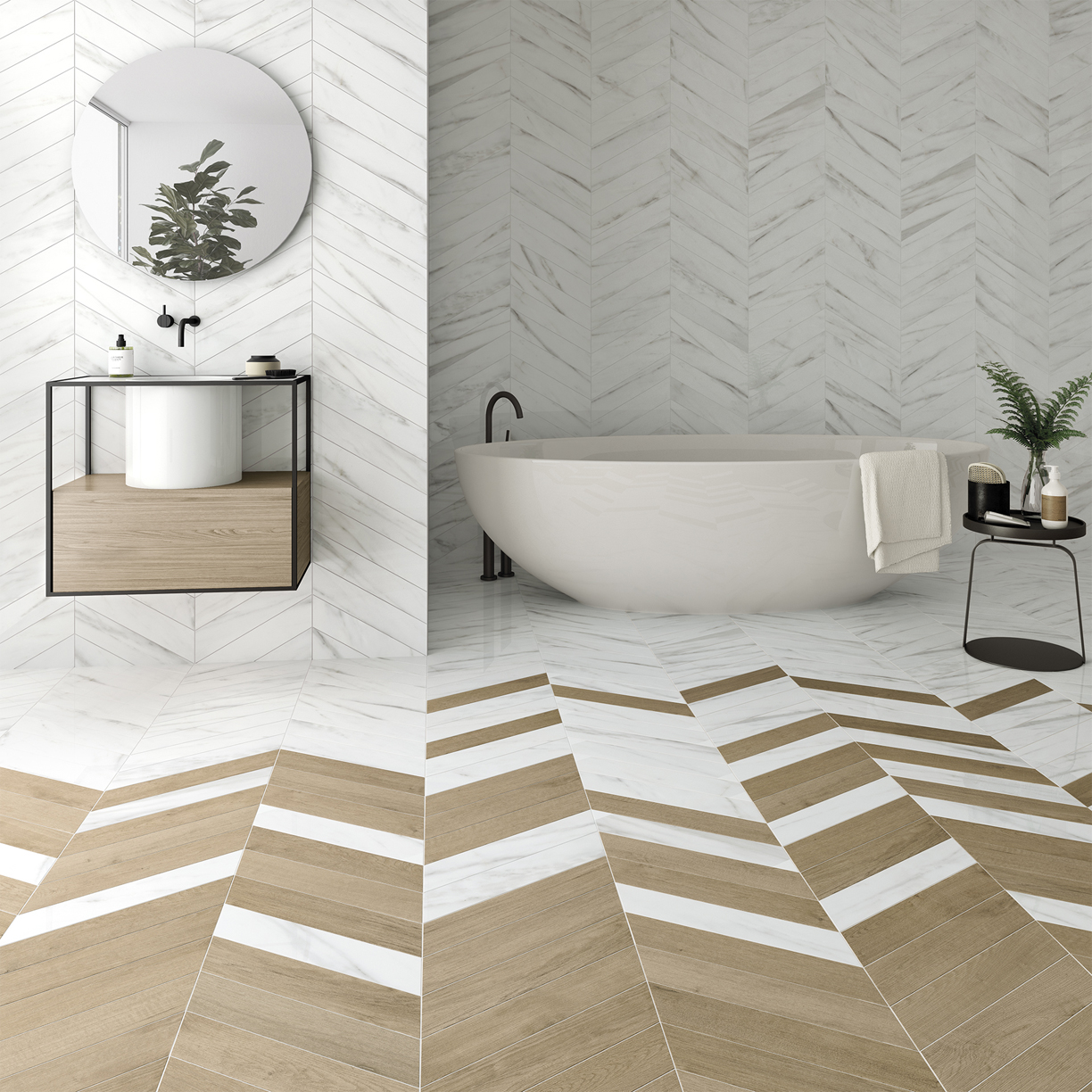
Photo courtesy of WOW Design
2. Sleek and Airy
By allowing the bold floor pattern to be the centerpiece of the room, the designer creates a light and airy atmosphere. Instead of cluttering the room with more designs and colors, the simple designs allow for the bold floor to stand out. The minimalist look along with various plants adds a sleek and refined style to the room while also adding just enough color to keep it vibrant.
The chevron floor interlocking tile and hardwood floors adds a one-of-a-kind design for the individual to enjoy. With the only other colors in the room being a hint of black and green, the minimalist design keeps the style interesting while also comforting in its simplicity. Keep this design in mind if you’re looking for a minimalist style with an added statement piece.
3. Eclectic Style
Don’t be afraid of flooring that gets colorful and different. When styled correctly, this can be the selling-point of the home. Its uniqueness never fails to impress those who are looking for something different yet clean and airy.
While this tile may look busy and complicated close up, take a step back and see the beauty it adds to the home. The mid-century modern design adds a flair unlike any other, while also staying sleek and refined.
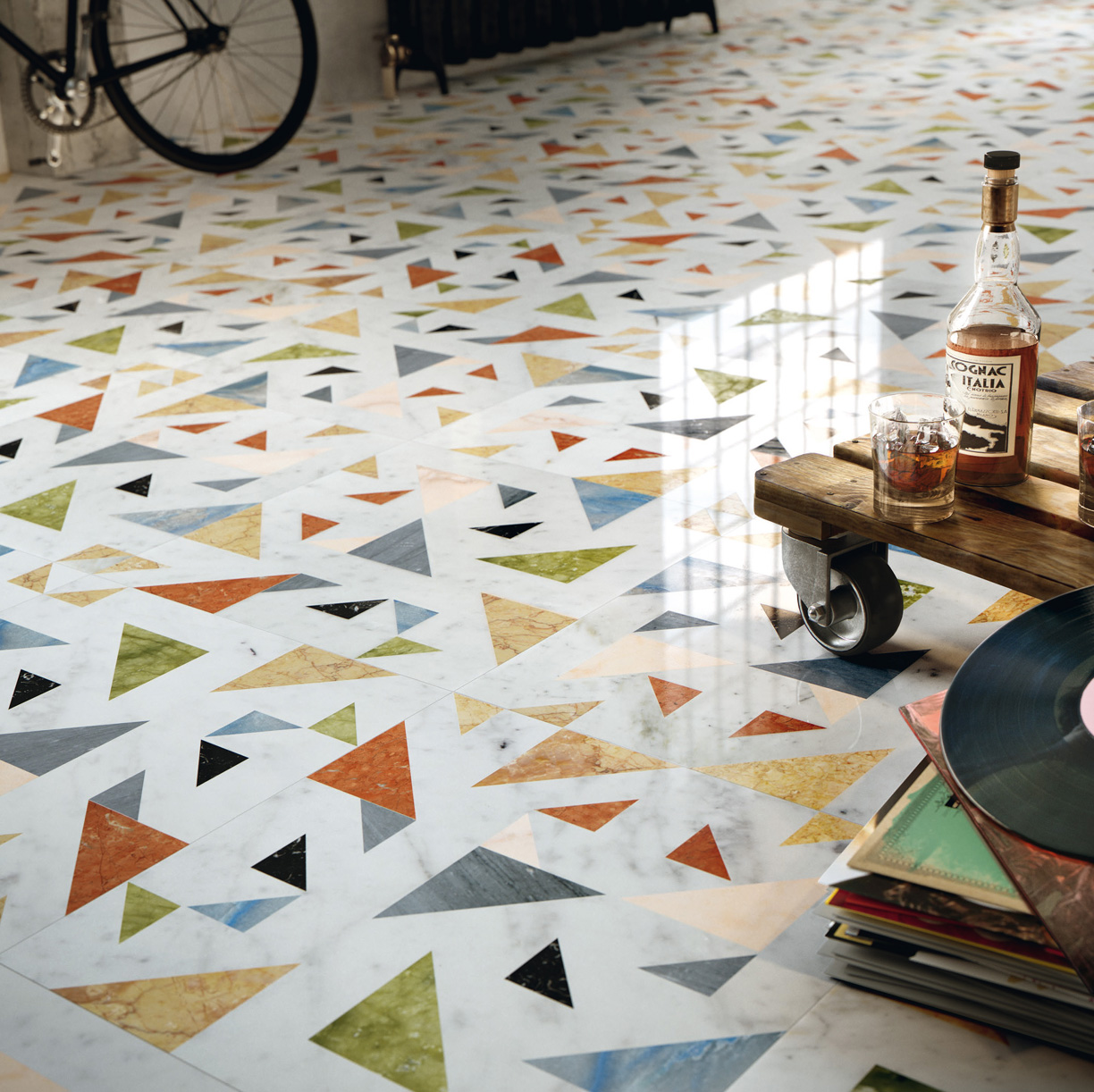
Photo courtesy of Lithos Design
High ceilings have become a statement piece in homes and apartments across the nation, and buyers have responded. The National Association of Home Builders conducted a survey in which 67 percent of respondents in 2018 said they would be willing to pay more money for ceilings higher than 8 feet on the first floor of their home — and with the percentage steadily increasing over the past few years, it’s clear that high ceilings are a great addition to any home.
With so many different benefits, high ceilings can become the selling-point of the home. Here are some benefits involved with designing a home around high ceilings:
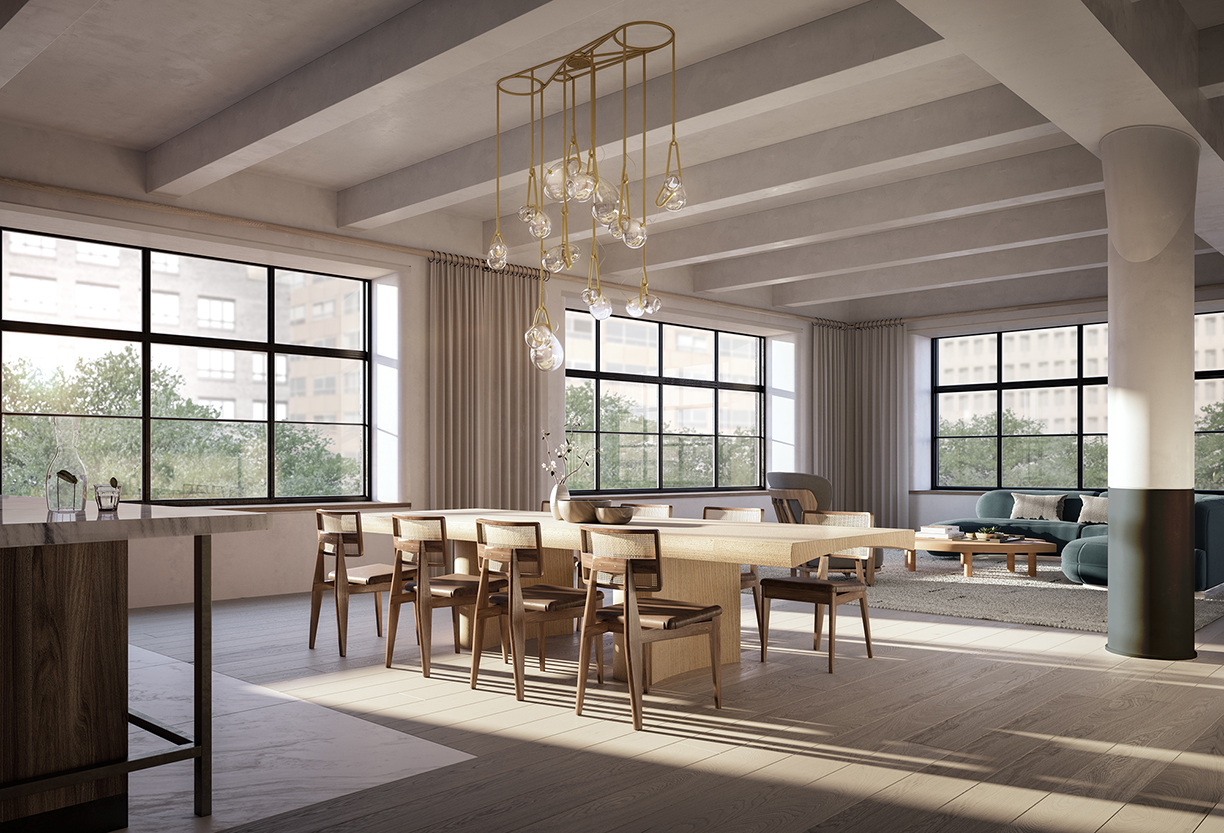
Photo courtesy of 90 Morton
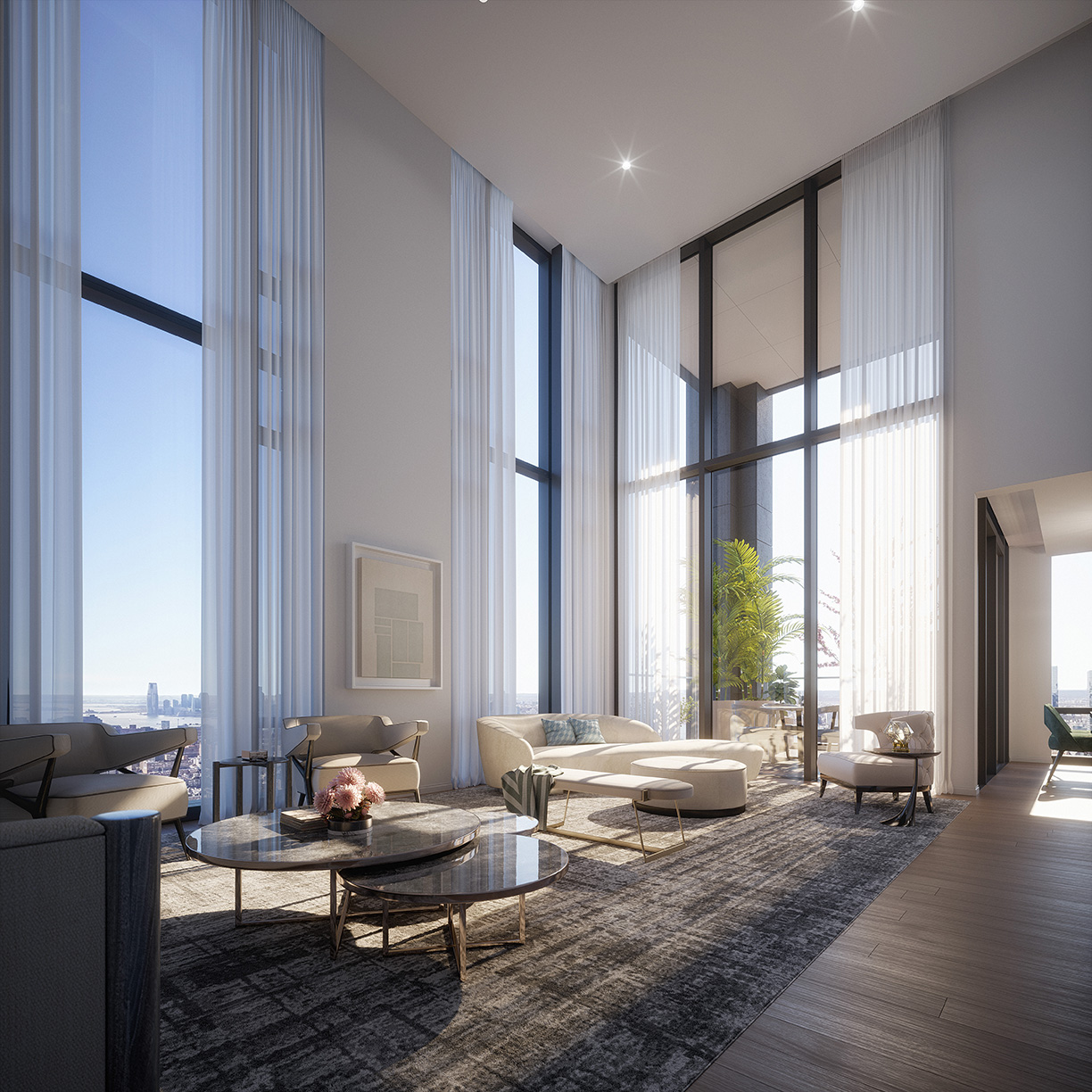
Photo courtesy of THREE MARKS
1. More Space
By adding more vertical space, high ceilings offer a spacious atmosphere for the individual to live in. The additional space adds a grander feel to the room, elevating the standard of luxury homes.
At 277 Fifth Avenue in New York City, the 13.5-foot ceilings provide a sense of grandeur and elegance, bringing an elevated sense of luxury to the residence. The light and airy curtains hanging from the top provide a sleek and stylish addition to the grand floor-to-ceiling windows.
1. Dazzling Views
In apartments and residential homes across the country, high ceilings can allow for even more windows, and therefore add spectacular views. With the potential of higher ceilings, floor-to-ceiling windows can provide spectacular views of the landscape before them.
At Summit New York, a private residential building located in the heart of Midtown Manhattan, the 15-foot ceilings allow for gorgeous views of the Chrysler building with the rest of the city in the background. The sheer height of the ceilings allows for a larger view, adding a dazzling feature to the home.
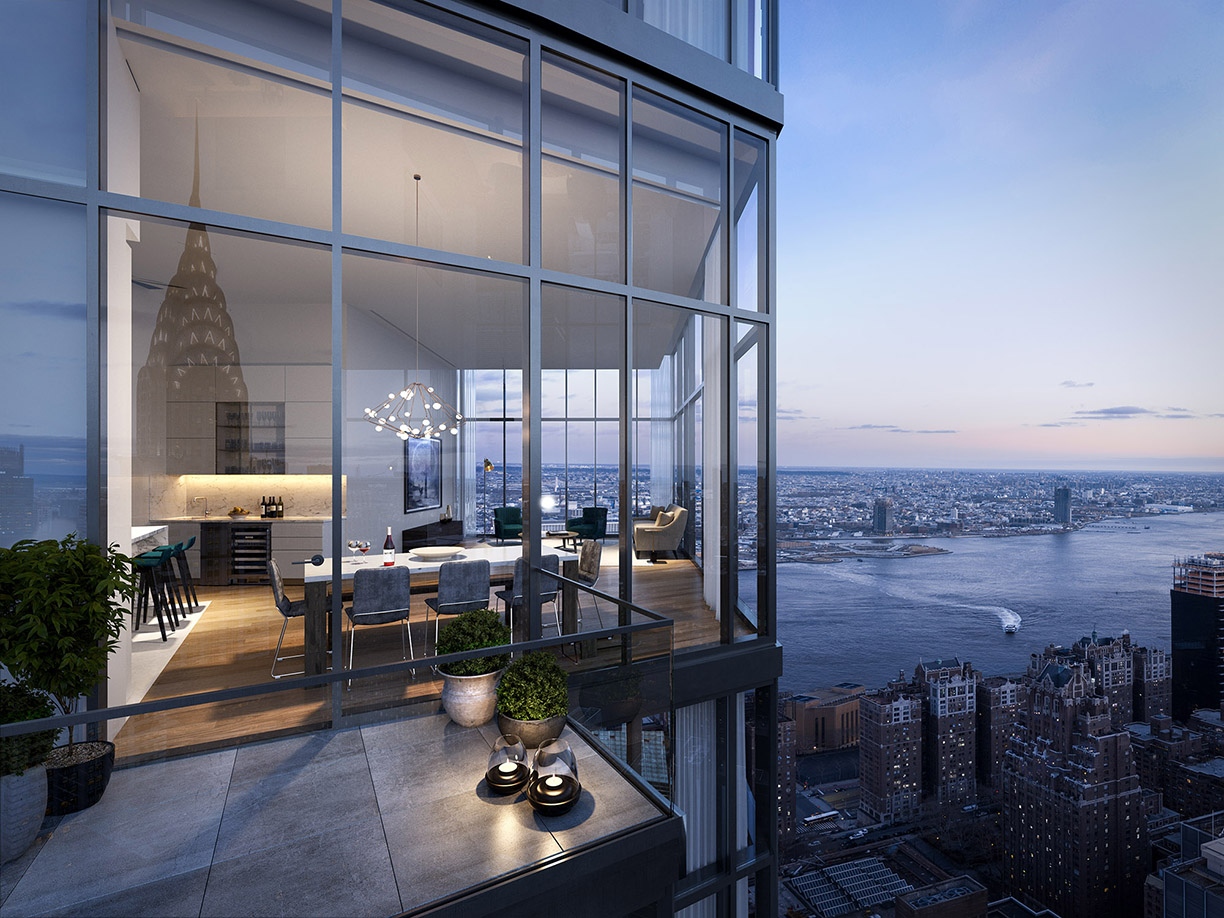
Photo courtesy of Summit New York
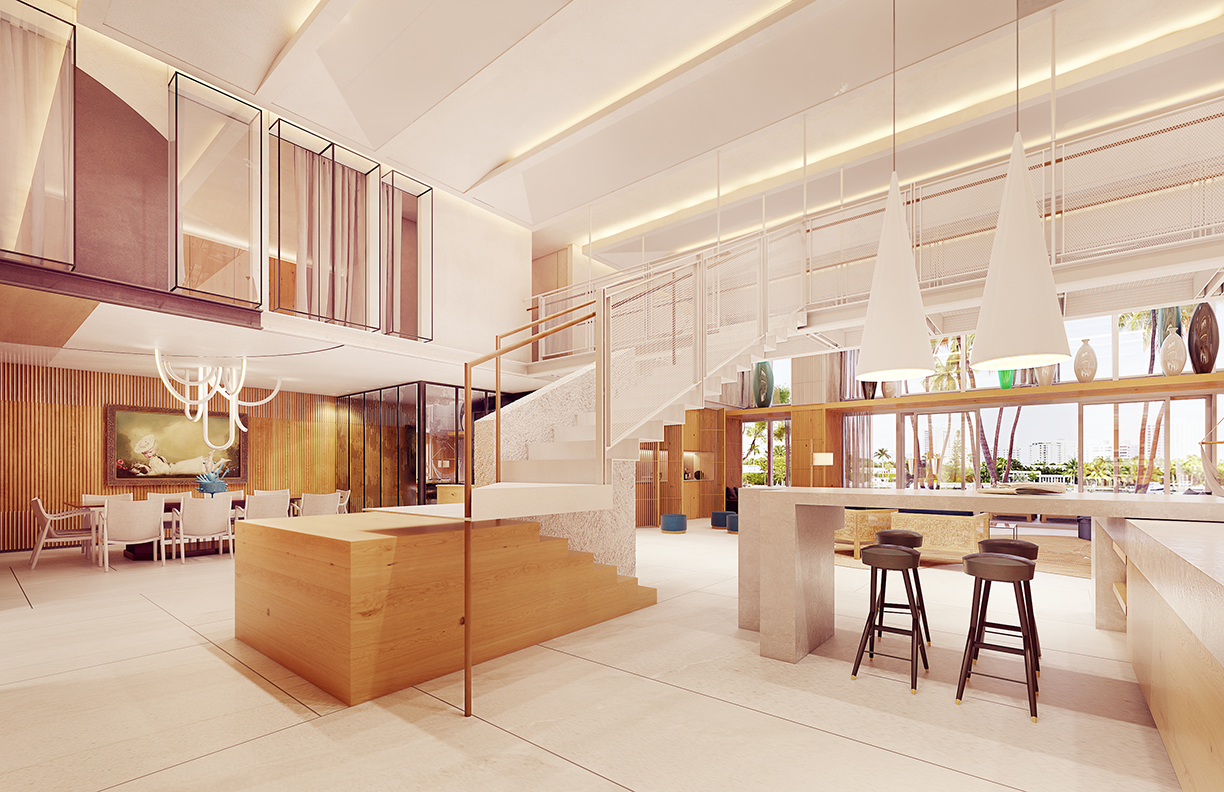
Photo courtesy of DooArchitecture
1. Creative Design
Although high ceilings include great benefits just by themselves, they also have added benefits for interior designers everywhere. Higher ceilings allow interior and architectural designers to get creative with the space they have available to them. Rather than creating a simple, high ceiling, designers have used their creativity to create spectacular pieces that can be the centerpiece of the space.
By using different materials and an eye-catching design, the designers have created a statement piece in the Ritz-Carlton Residences in Miami, Florida. They not only add a spacious and airy feel to the room, but its design allows for an artistic interpretation of the classic high ceiling.
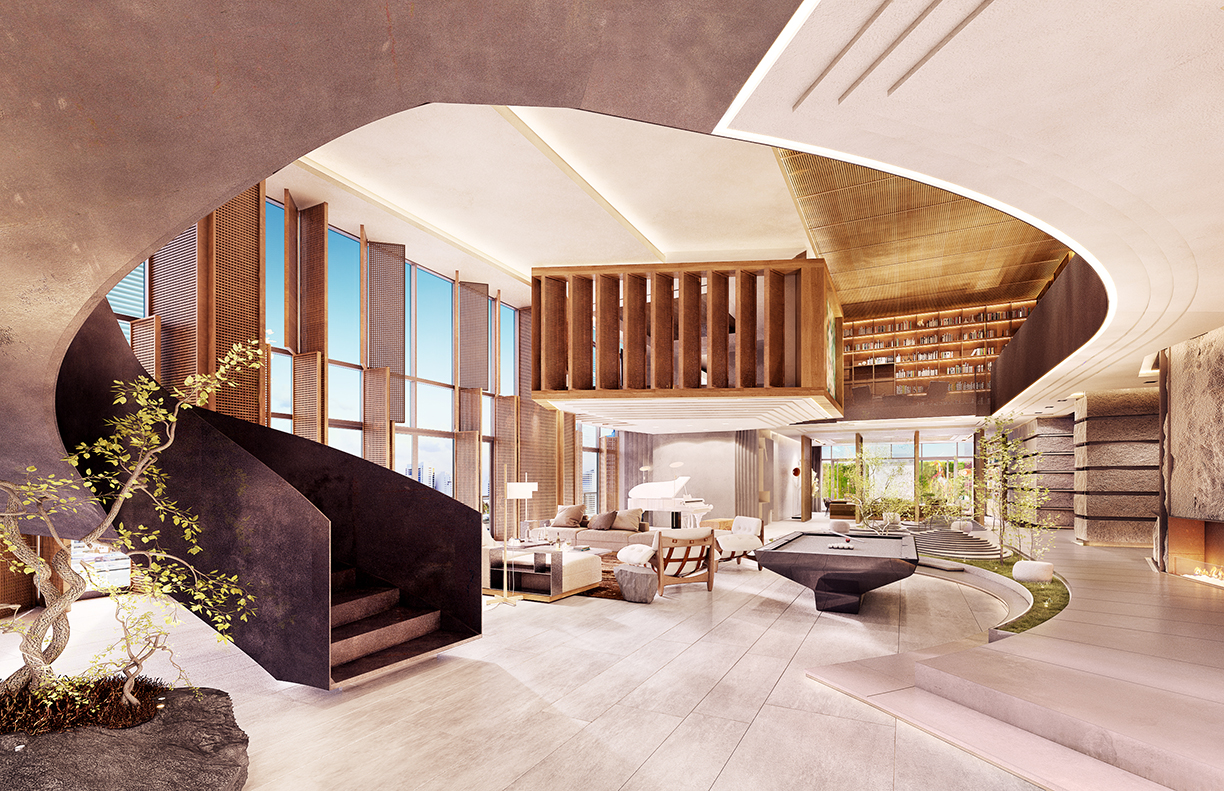
Photo courtesy of DooArchitecture
1. Wellness-Booster
Adding natural light and creating an uncluttered, airy atmosphere, high ceilings with tall windows can increase the wellness of the individual. And with wellness becoming a hot topic in the industry, high ceilings and tall windows can become the selling-point of the home. By 2017, the wellness industry was worth $4.2 trillion, according to the Global Wellness Institute — a jump of 12.8 percent from 2015. And as the industry’s worth only increases, higher, grander ceilings have the potential to be a decisive element to the home.
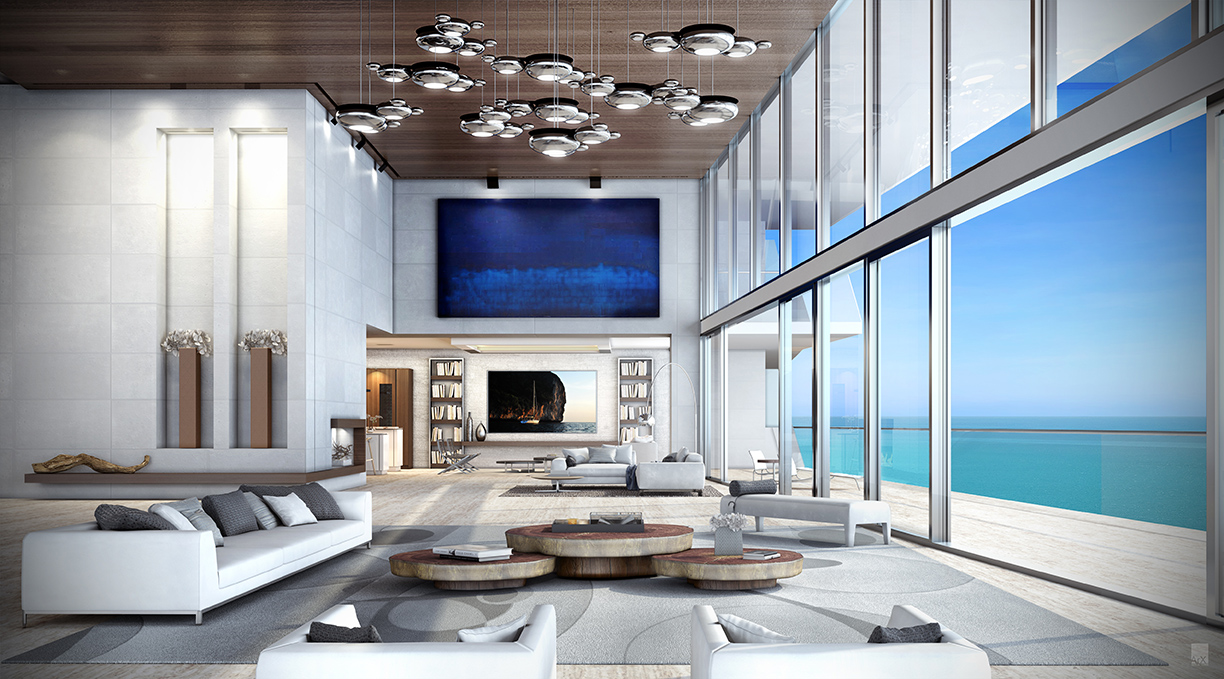
Photo courtesy of Turnberry Ocean Club
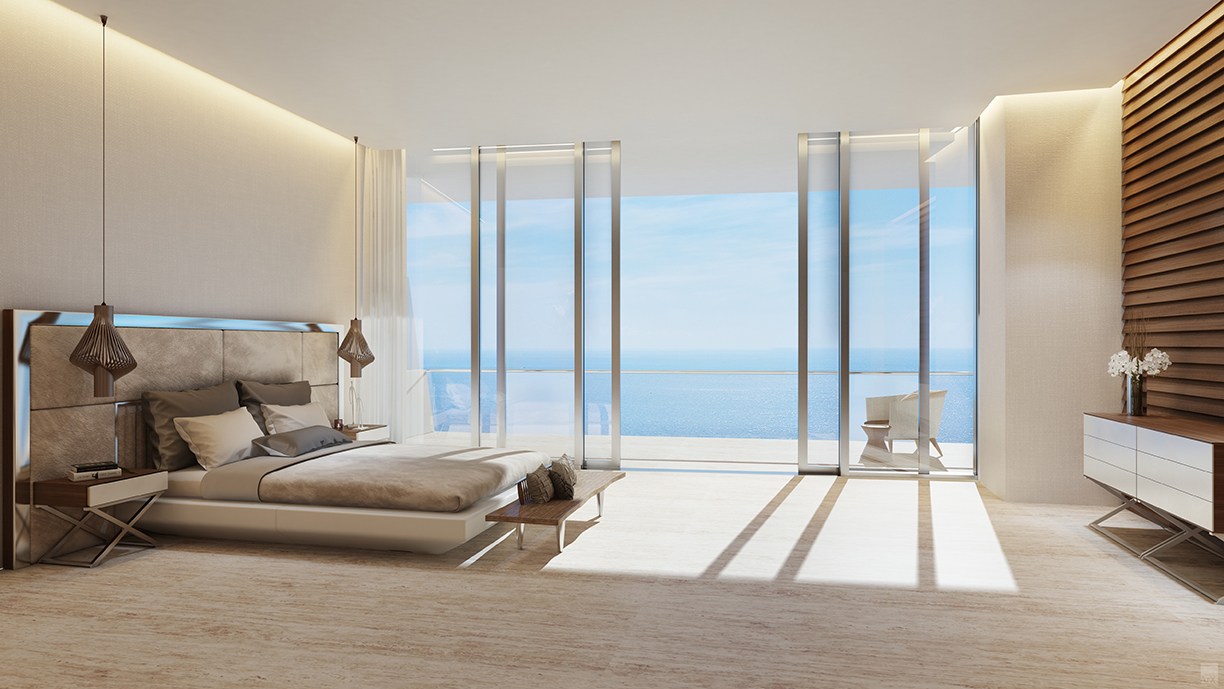
Photo courtesy of Turnberry Ocean Club
By creating a warm and inviting atmosphere, the fireplace can always become the centerpiece of the home. With so many different styles, however, it is becoming increasingly difficult to make decisions based on the look of the room. Here are different styles that can be used to complement your own personality and the atmosphere of the overall home.
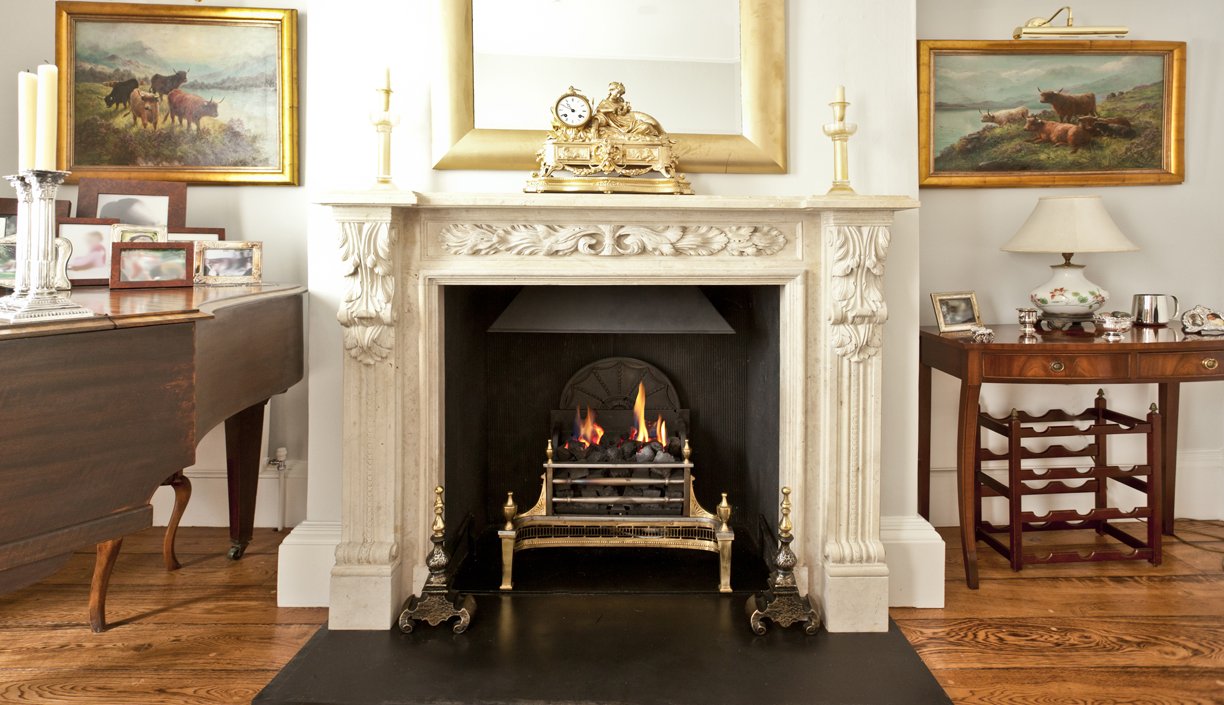
Photo courtesy of THE OLD CINEMA
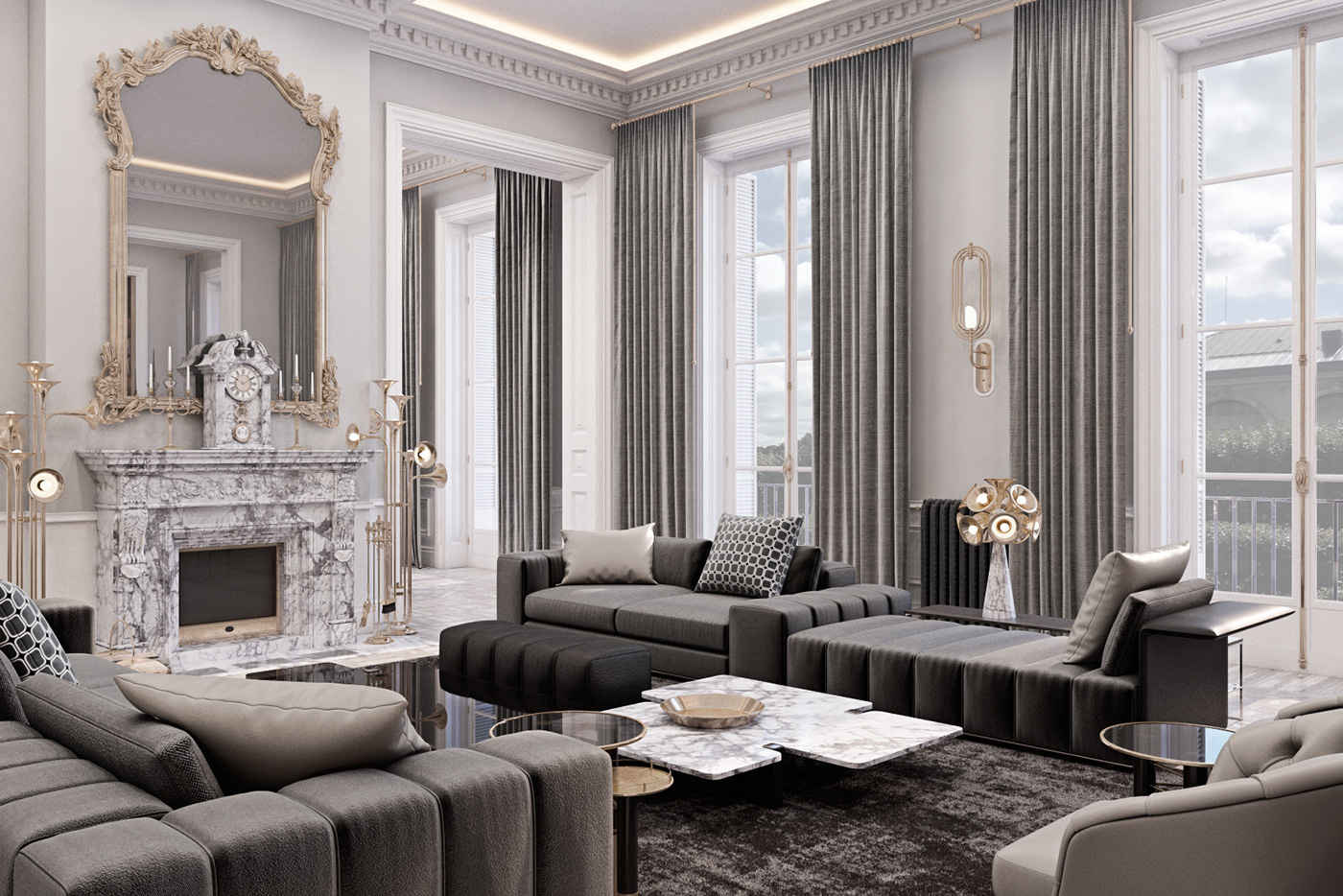
Photo courtesy of DelightFULL
1. The Classic Grand Fireplace
For a more refined look, the grand fireplace will do just the trick. The gray and white colors in this living room add to the polished atmosphere, bringing luxury to the forefront of the space.
If the style of the home is more traditional and elegant, this is the perfect fireplace for any room. Although it will blend in with the character of the rest of the home, it can still be grand enough to catch your eye. With its intricate detail and sheer size, it is certain to be the masterpiece of any home.
2. The Simple and Sophisticated Fireplace
If you’re looking for a fireplace that warms the atmosphere without taking away from other statement pieces in the room, head in the direction of a simpler, sleek fireplace for your home.
For a more sophisticated style that blends into the background, look toward matching the color of the fireplace with the dominant colors of the room. Tans and light greens dominate the following space, with the chandelier in the center being the main statement piece of the room. To avoid taking your attention off of the chandelier, allow the fireplace to blend seamlessly into the rest of the room.
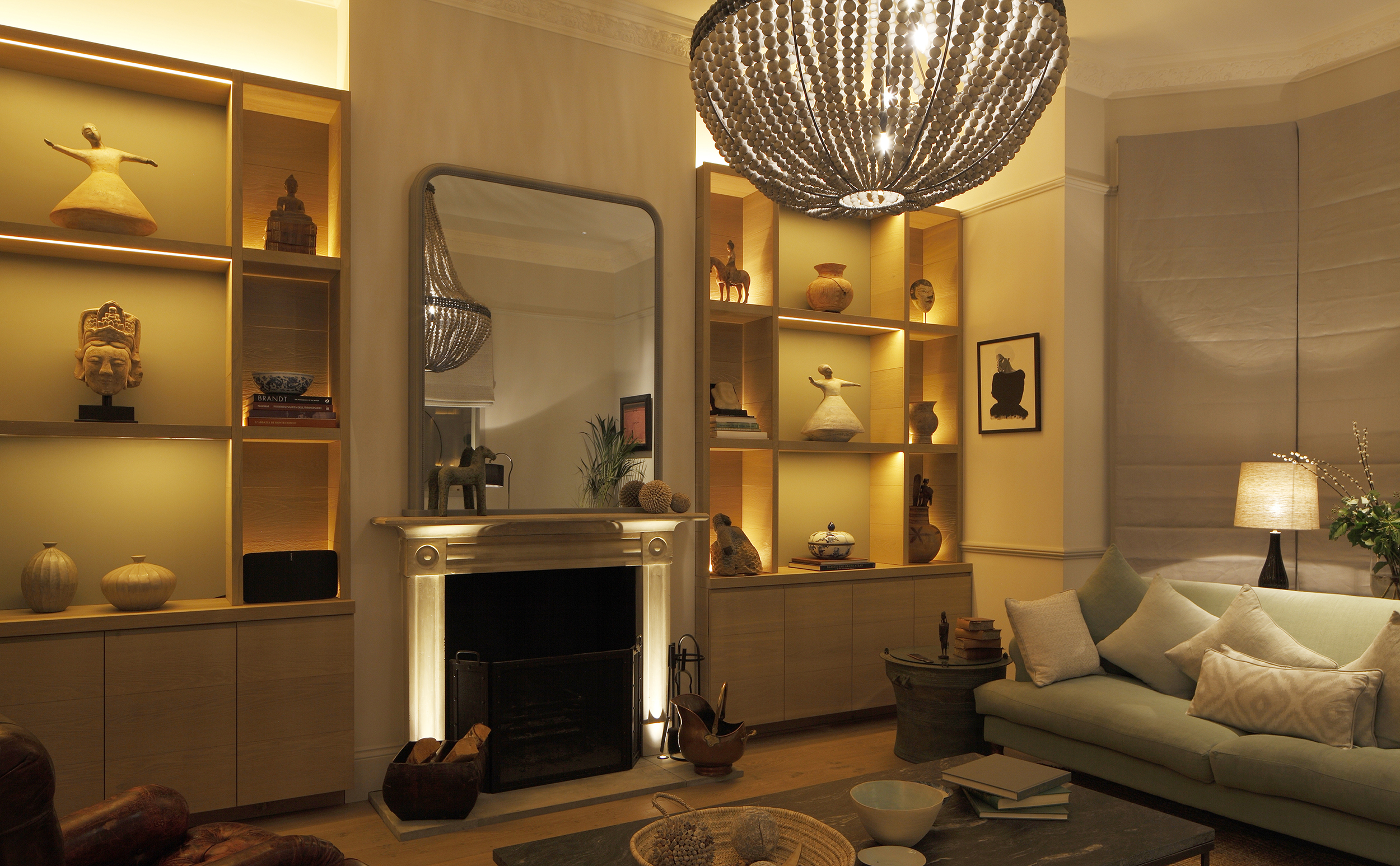
Photo courtesy of John Cullen Lighting
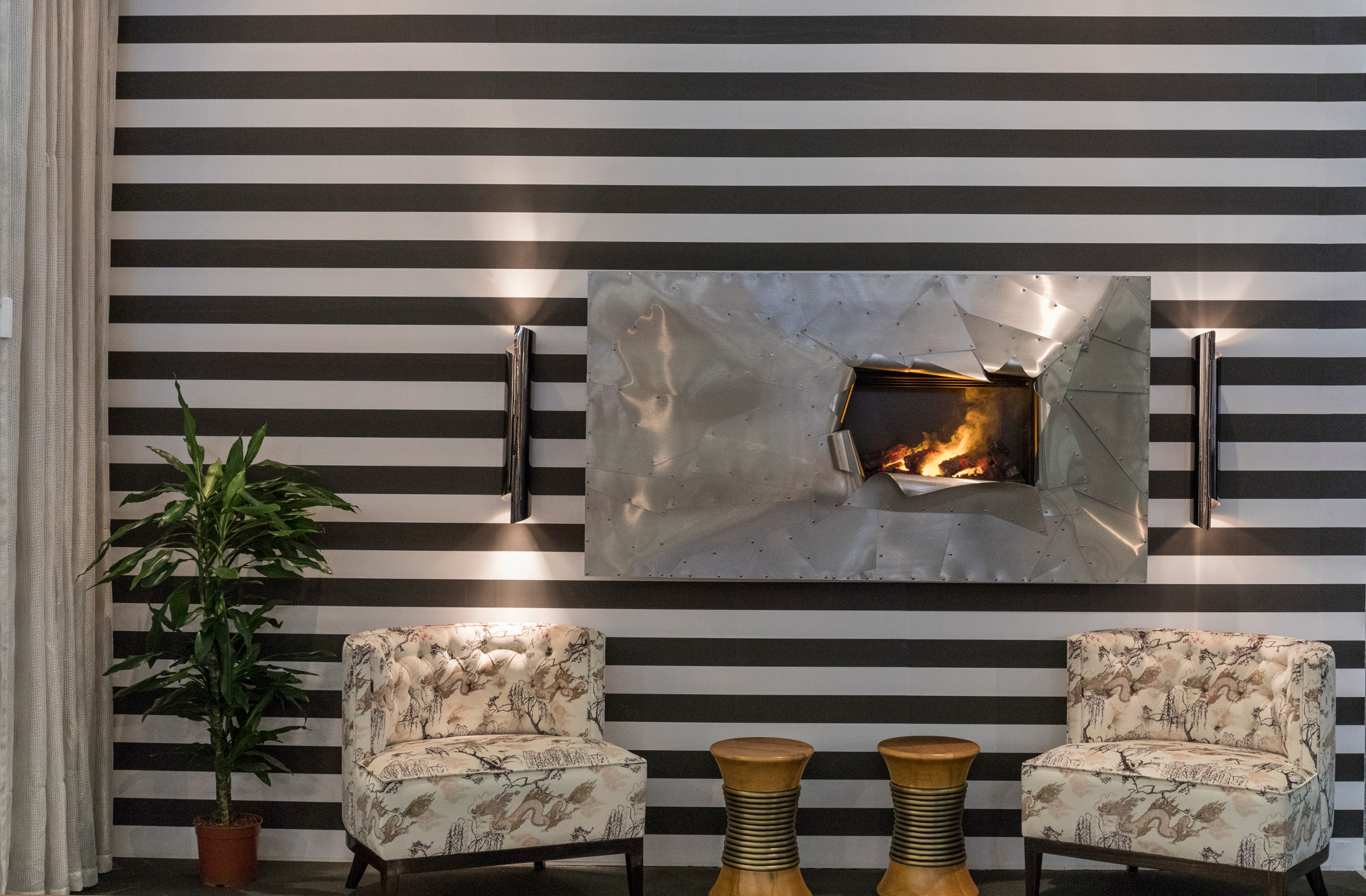
Photo courtesy of Brabbu Design Forces
4. The Avant-Garde Fireplace
For the more eclectic, a fireplace can also become a piece of art. Instead of a simple or elegant design, tough material such as metal and less-common designs can add the perfect conversation piece to any room.
This fireplace in this living room adds a bold style that is not just a functional piece of the home, but a work of art in it of itself. The layers of metal that are perceived to have been peeled back to open up the fireplace, which adds a unique addition to the piece. With a bold wallpaper in the background and dramatic lighting, this style is for the most creative and eclectic individual.
3. The Space-Saver Fireplace
For those who live in apartments or are simply looking to save a bit more space, don’t rule out the possibility of having a fireplace in your home. For a more eclectic style while also saving space, look toward the stove fireplace. This style blends seamlessly into older-style apartments or spaces, and can add a pop of old-world flair to more modern rooms as well.
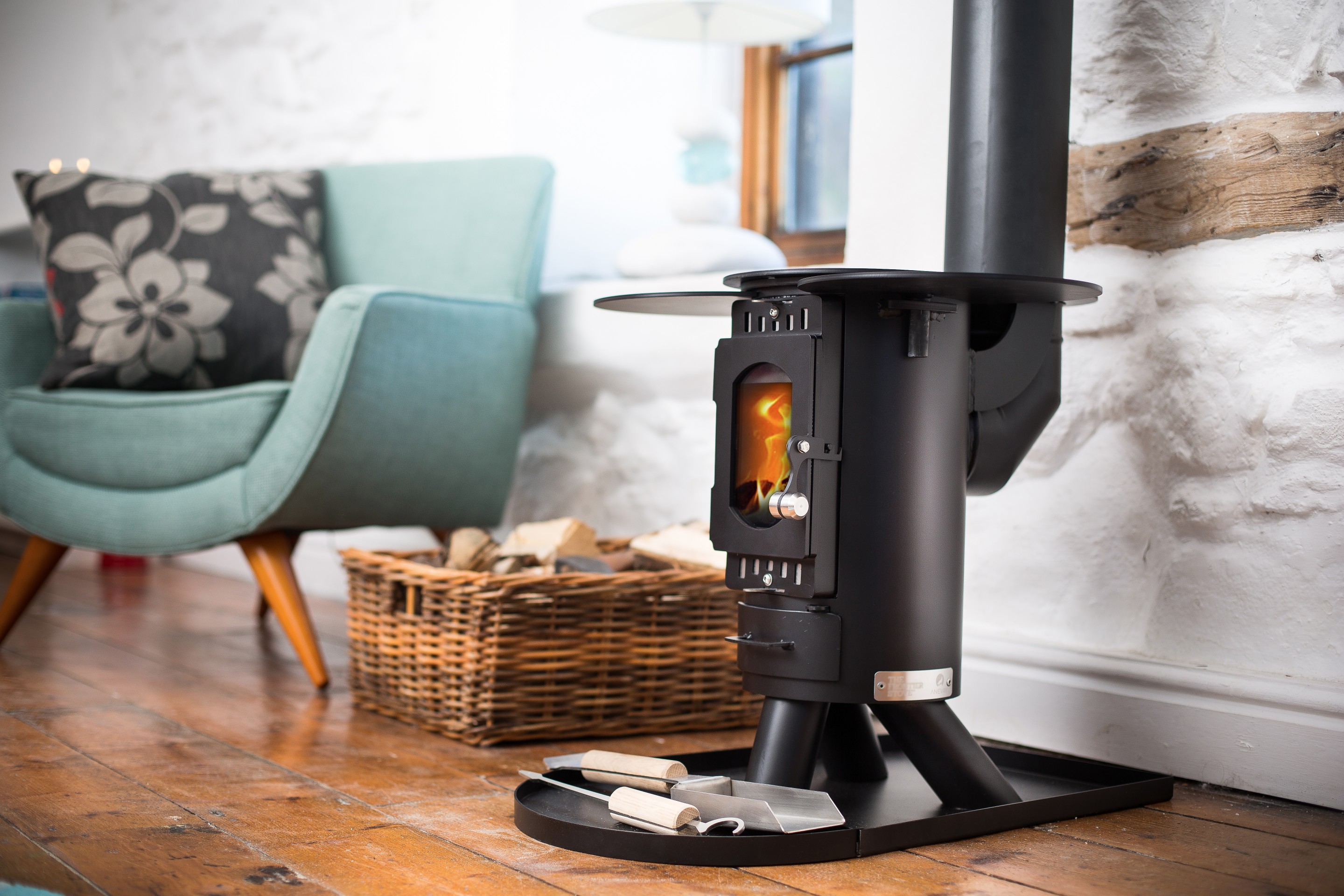
Photo courtesy of Ludlow Stoves
While the warm weather is slowly coming to a close in most of the country, greenhouses and conservatories are great for any type of weather. Both can add a beautiful, unique addition to any home — but what’s the difference, and how do you decide between the two?
While greenhouses are primarily meant to grow plants in a climate-controlled space, a conservatory is meant to be more of a living space where plants can grow in the same area. Here’s how to decide which would be better for your home:
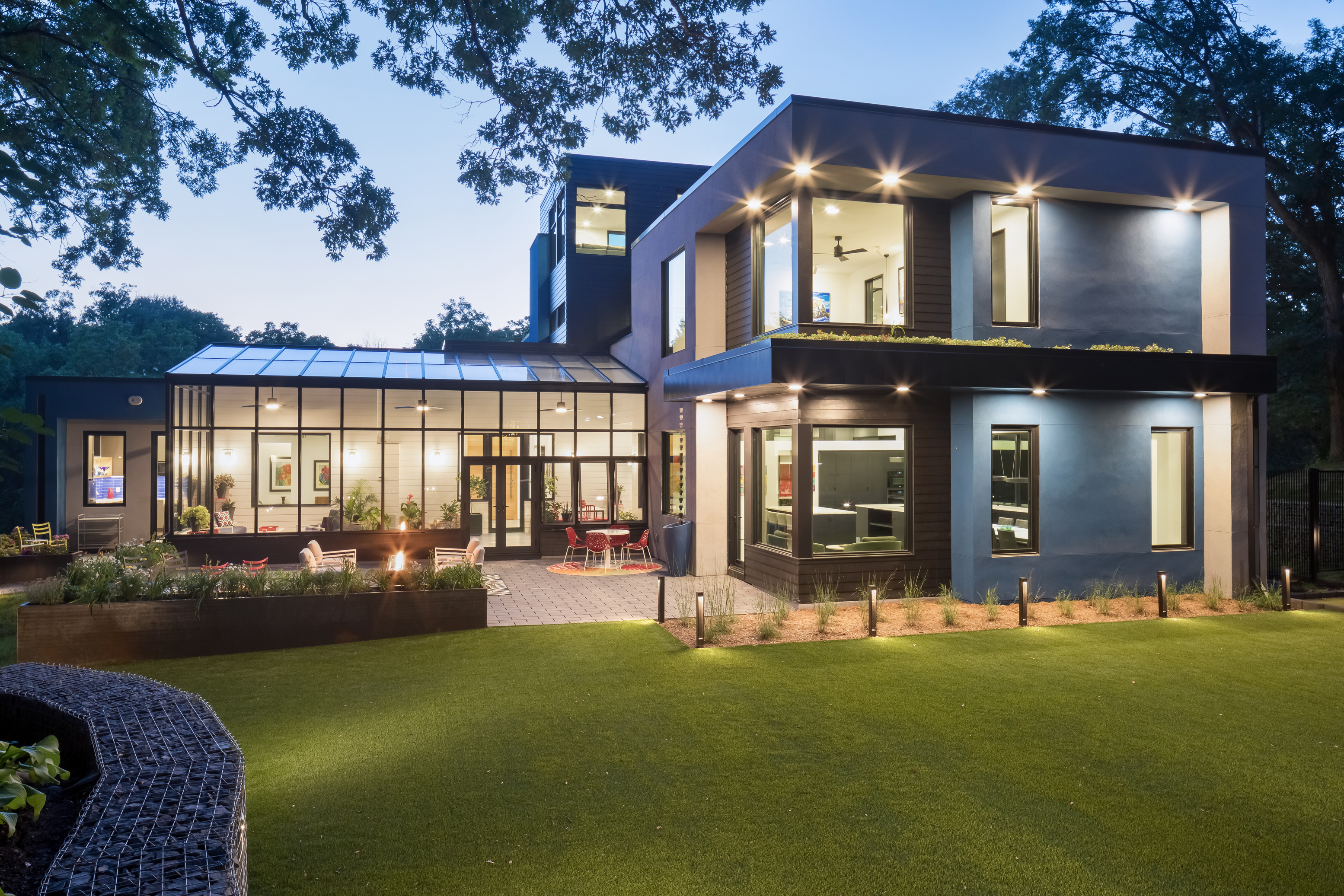
Photo courtesy of Conservatory Craftsmen

Photo courtesy of Conservatory Craftsmen
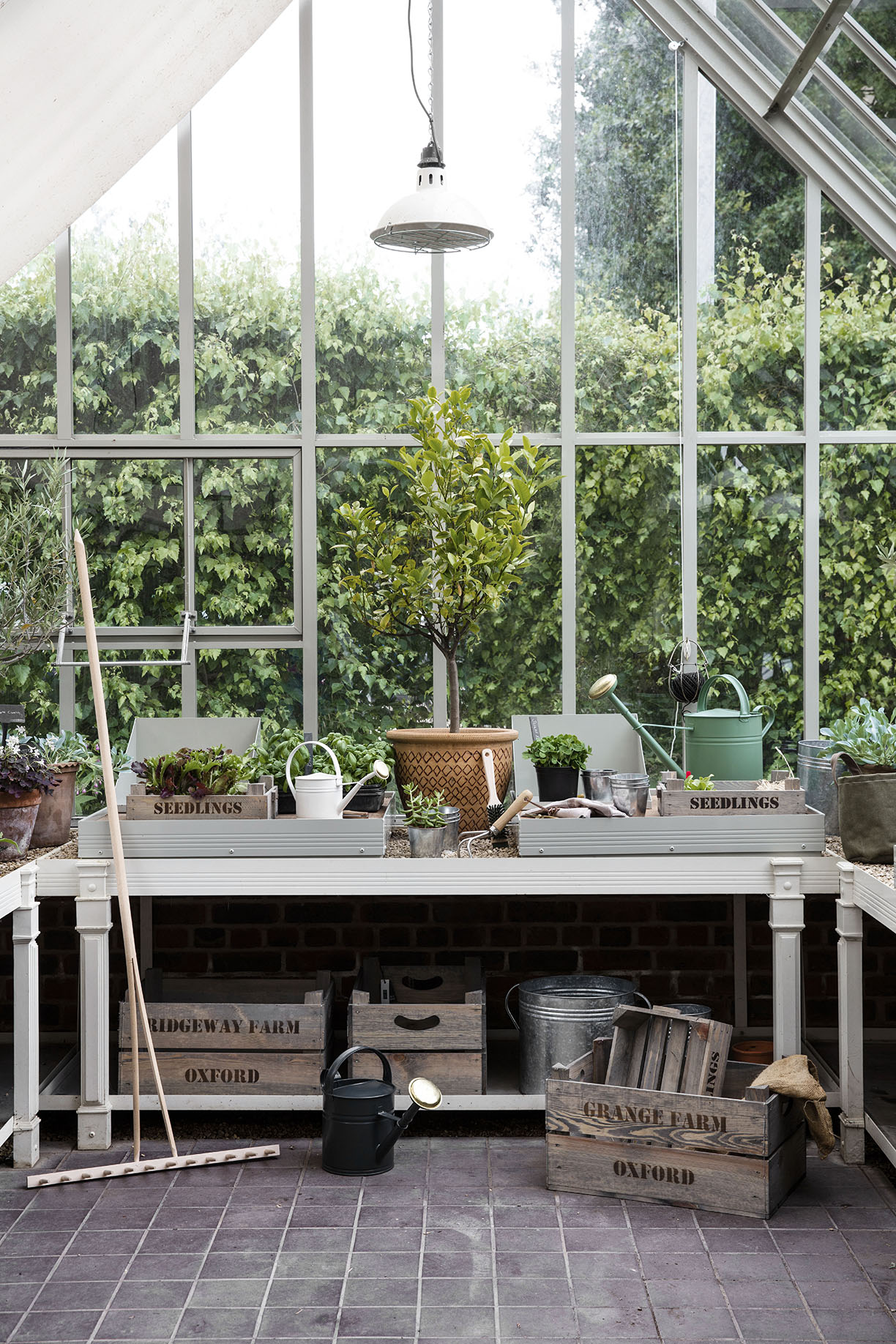
Photo courtesy of Garden Trading
1. Use of Space
If you’re looking for extra living space in the home, a conservatory would work better. Add couches and benches for comfortable seating in a relaxed atmosphere. The glass walls allow in the much-needed light to create the bright, refreshing atmosphere for you to relax in.
If you’re interested in cultivating plants and produce, a greenhouse is a better fit. While it won’t add another seating area to your home, it will contribute to the uniqueness of the home allow those who love gardening to continue their hobby all year round.
2. What are Your Hobbies?
For the green thumb, adding a greenhouse to the home is always a step in the right direction. The main purpose for the area is to cultivate plants regardless of the weather outside, which will keep the hobby alive during all seasons of the year. Used solely for growing plants, it’s important to understand the commitment involved with keeping a greenhouse alive. The space requires upkeep, which may only be enjoyable for someone who loves gardening.
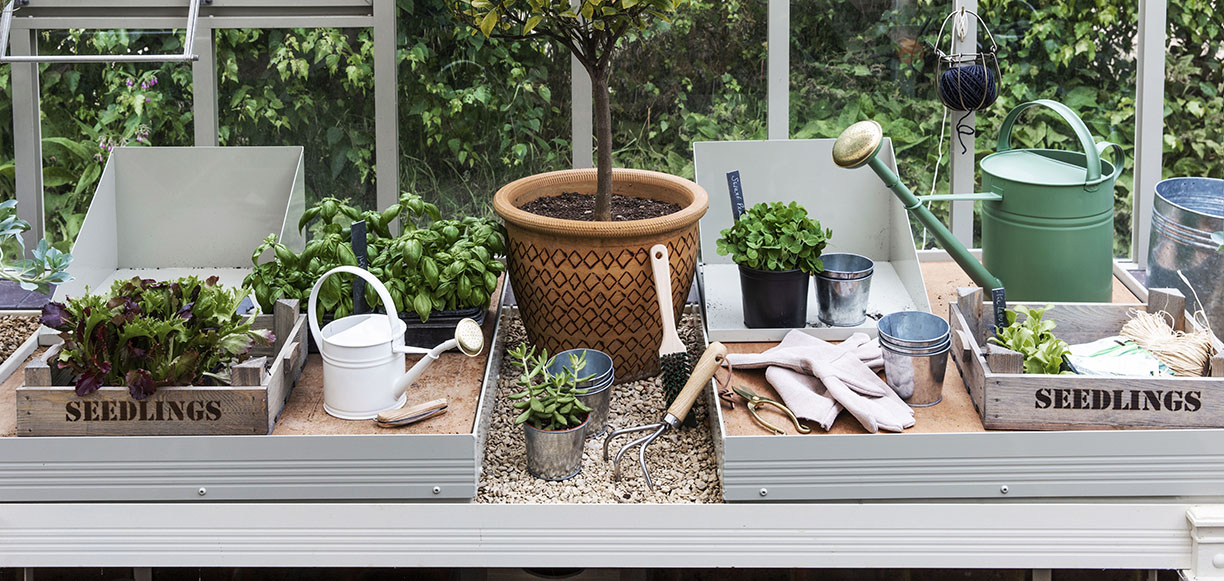
Photo courtesy of Garden Trading
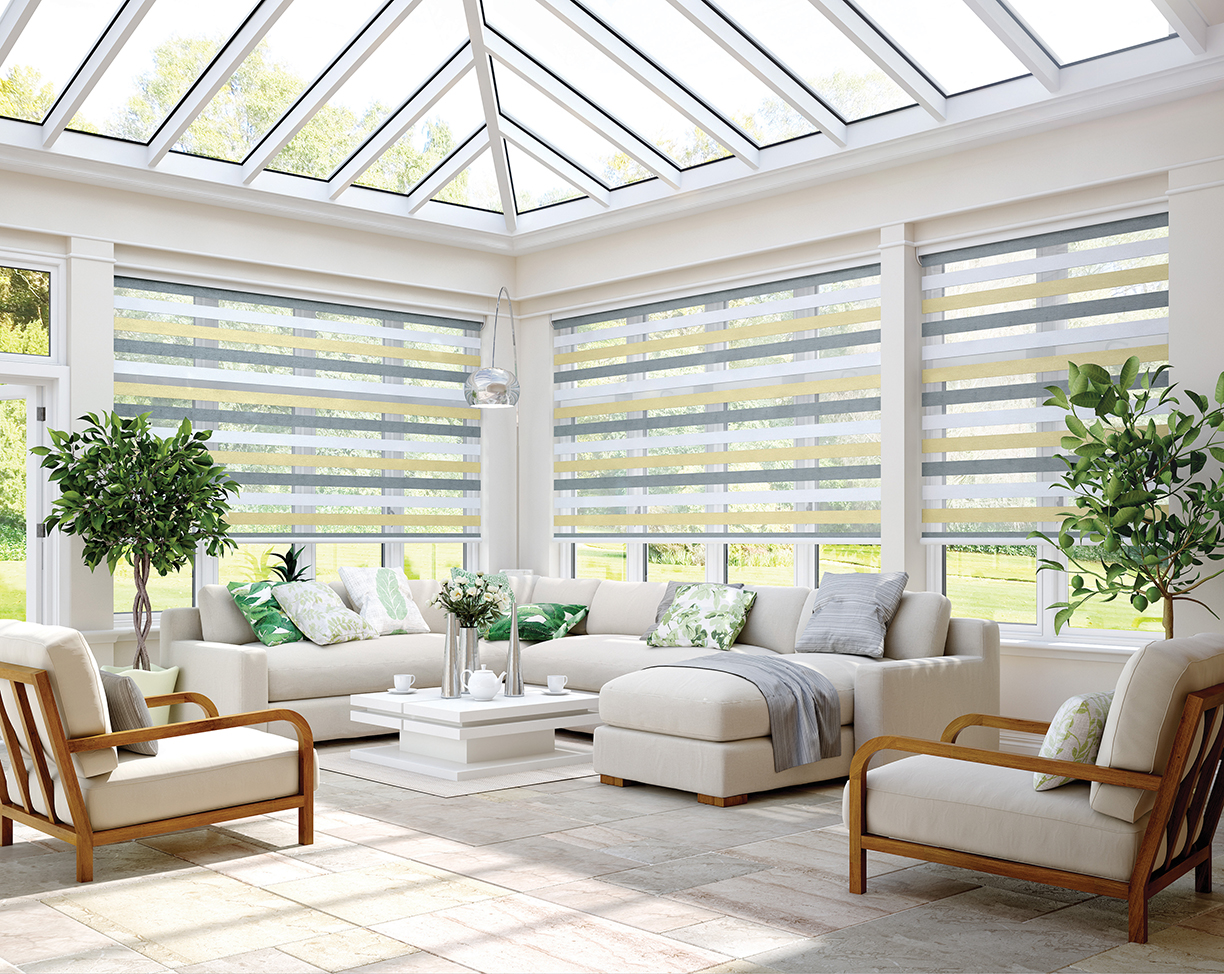
Photo courtesy of English Blinds
For the person who likes to read and relax more than garden, a conservatory might be a better fit. While still allowing the individual to connect with nature, they don’t have to be as involved as a greenhouse owner would.
3. Atmosphere is Everything
The atmosphere in a greenhouse would be much different than in a conservatory. Look toward a greenhouse if a more nature-oriented atmosphere centered on gardening is desired.
Meanwhile, a conservatory will have a more finished and refined atmosphere with its furnishings. While still oriented around nature and the plants it holds, it is much less involved in the gardening process and therefore has a more polished atmosphere than a greenhouse.
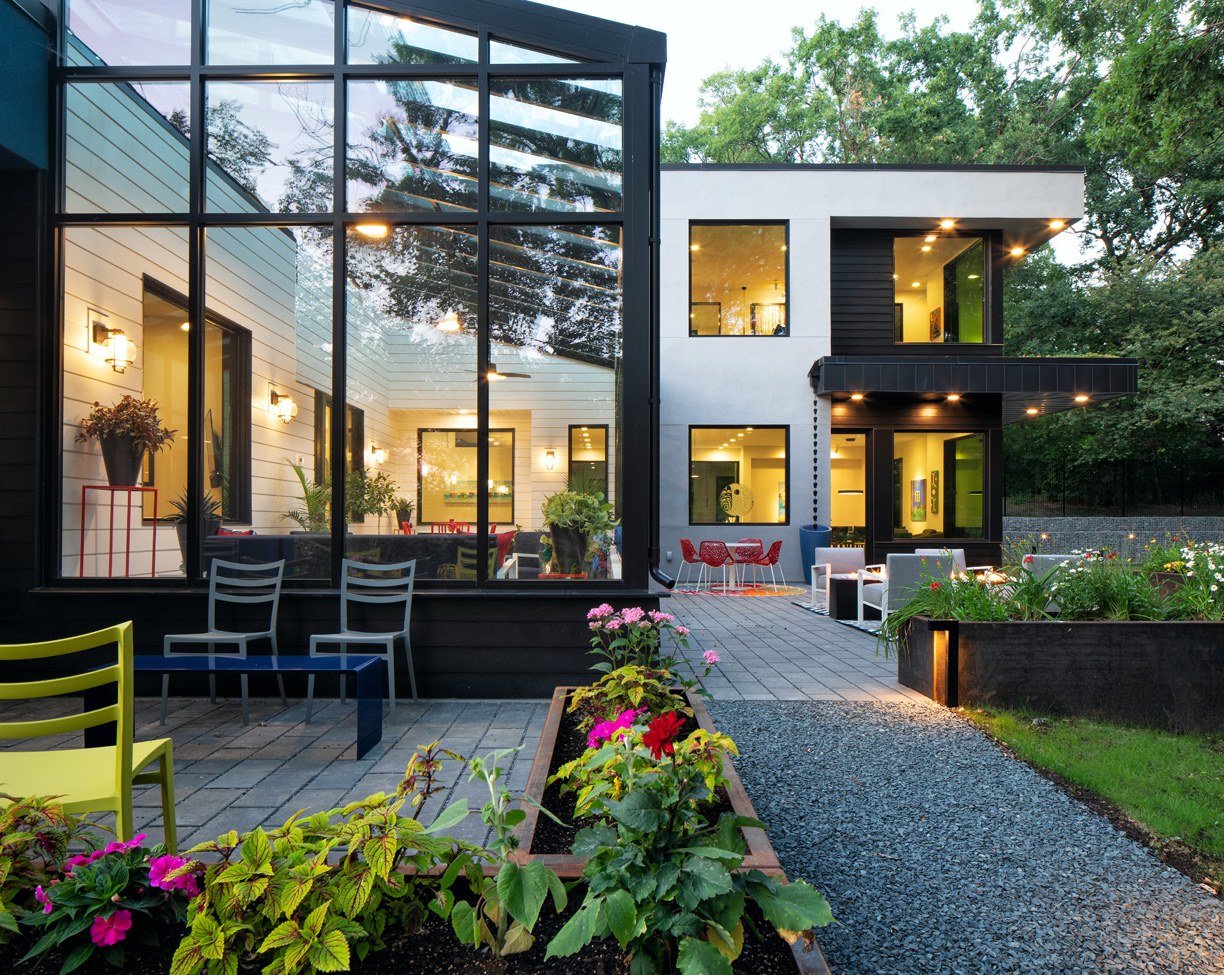
Photo courtesy of Conservatory Craftsmen
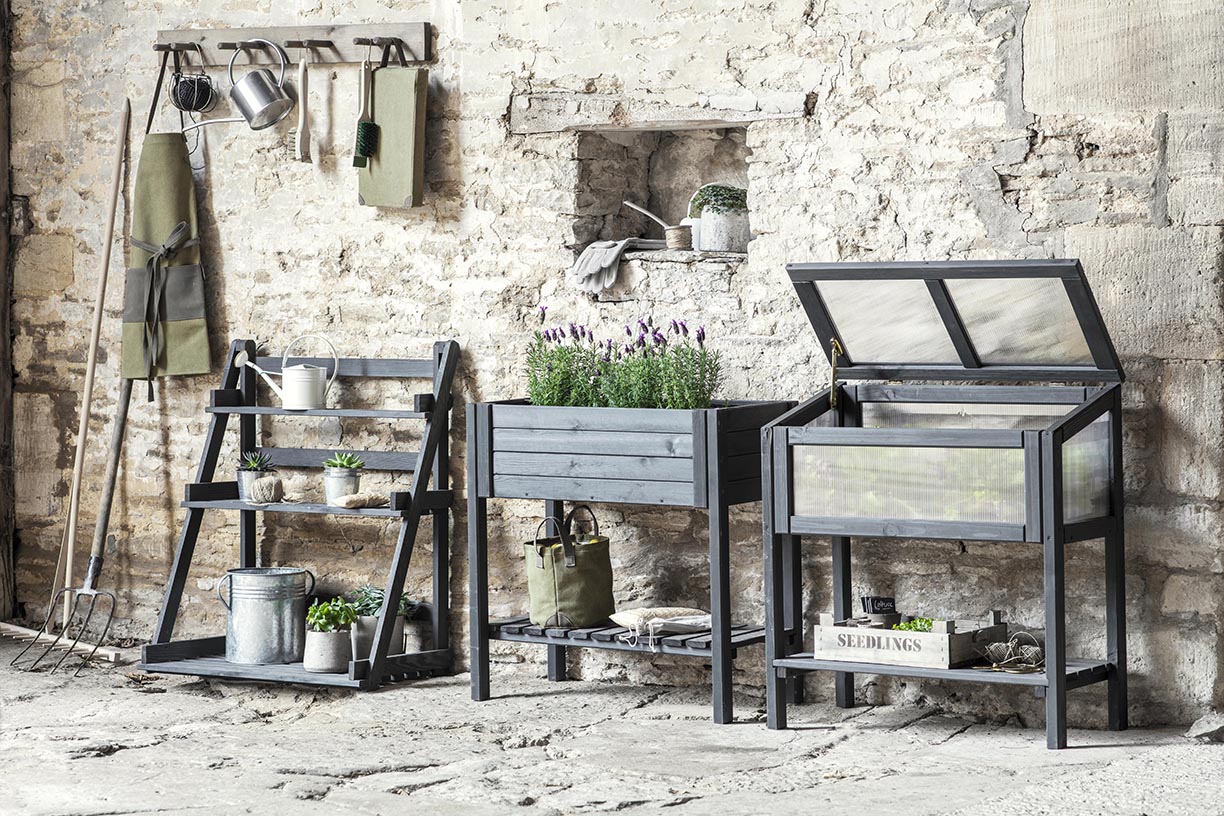
Photo courtesy of Garden Trading
4. Overall Style
For a more modern and refined style, a conservatory is the right direction — while involved in nature, it is primarily meant for relaxing near the outdoors during any season of the year.
While both add a unique addition to any home, a greenhouse is a niche space for those who love nature and gardening during all seasons of the year. For a more eccentric look, a greenhouse is the perfect fit.




